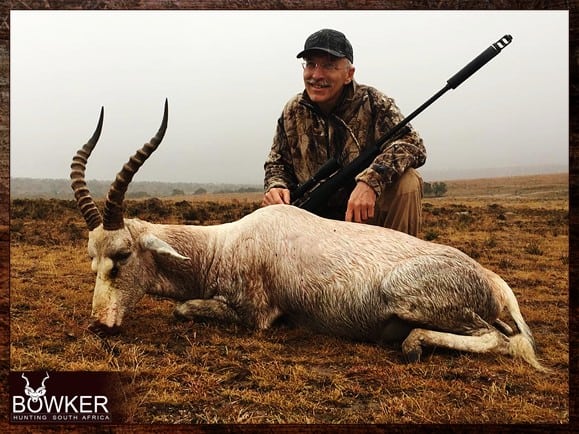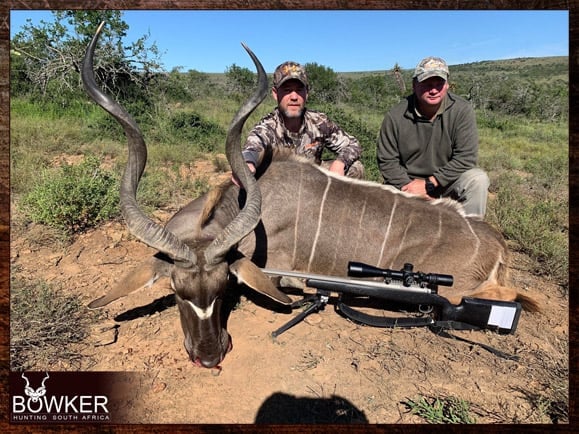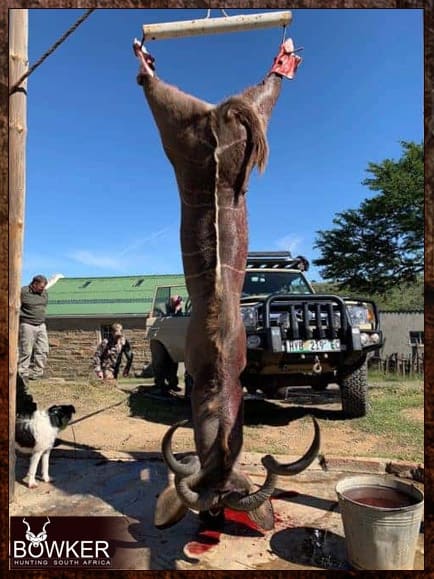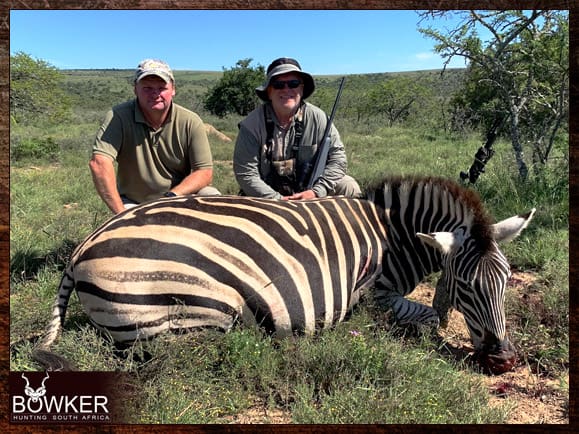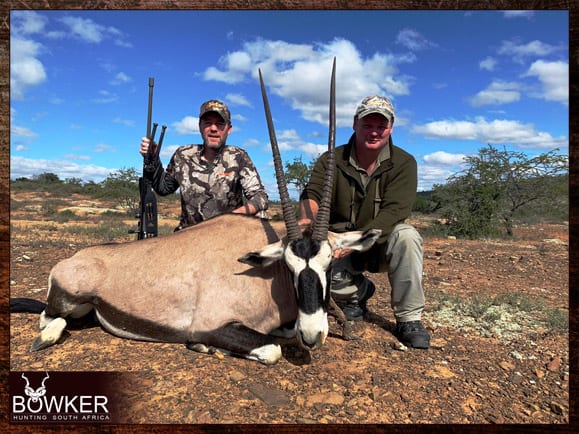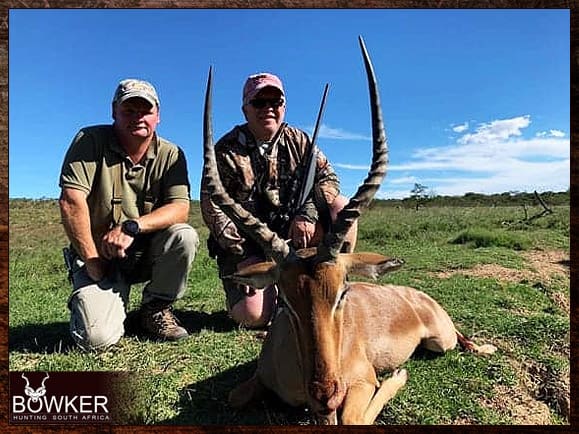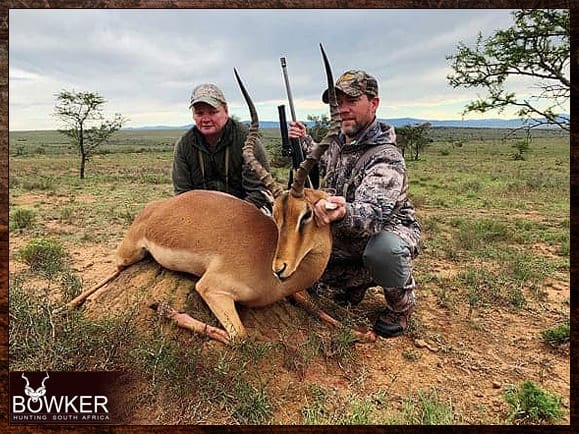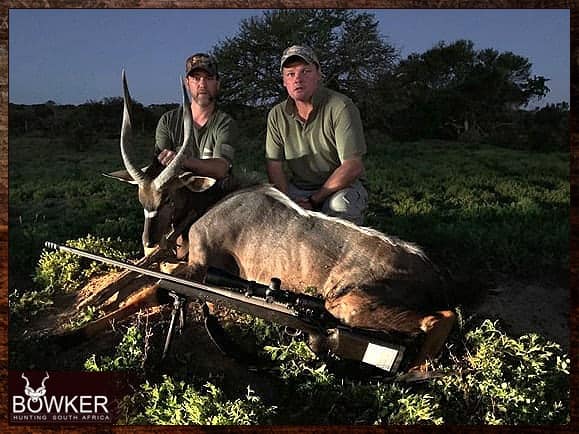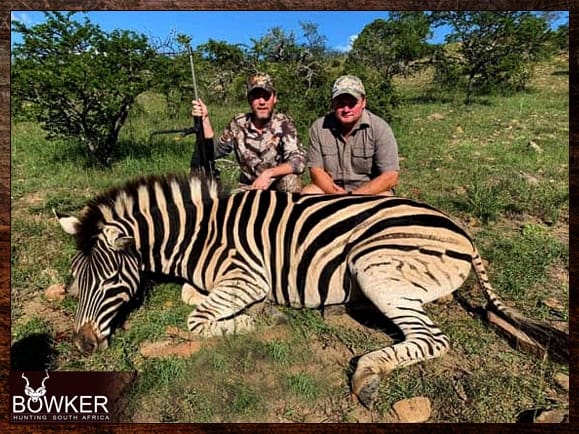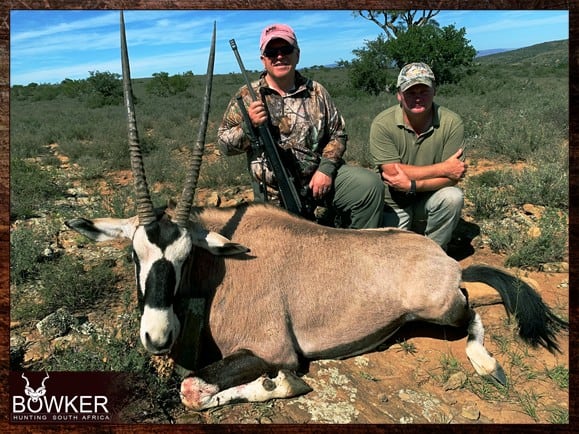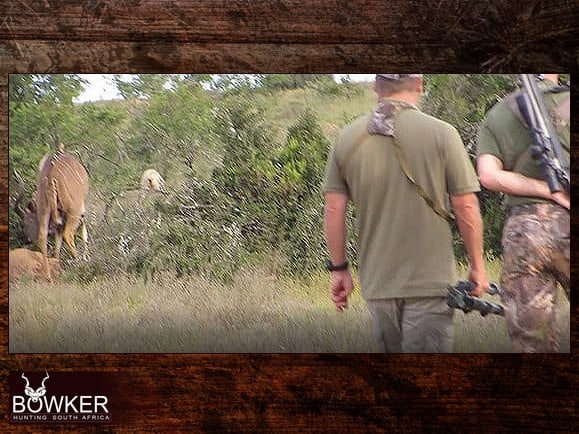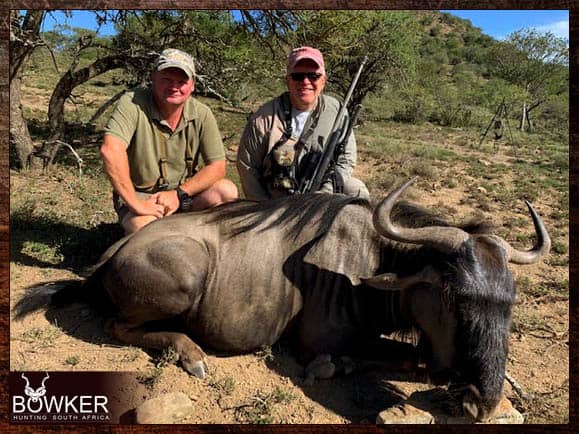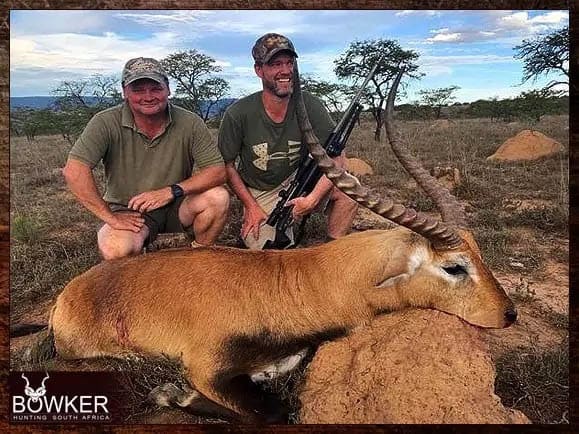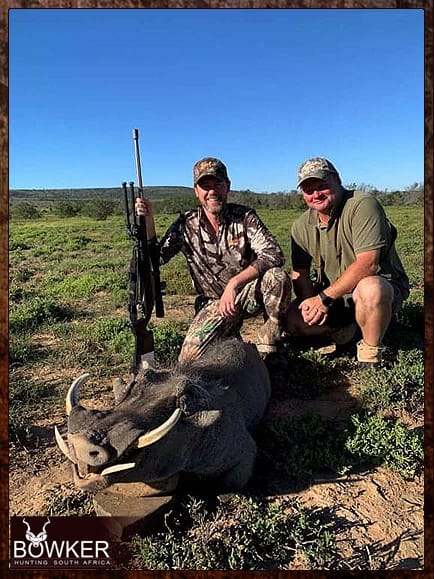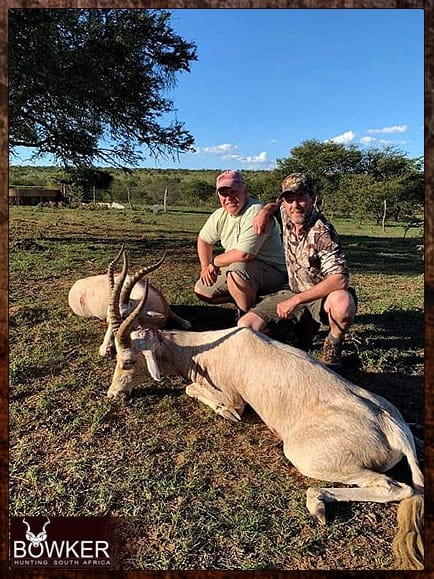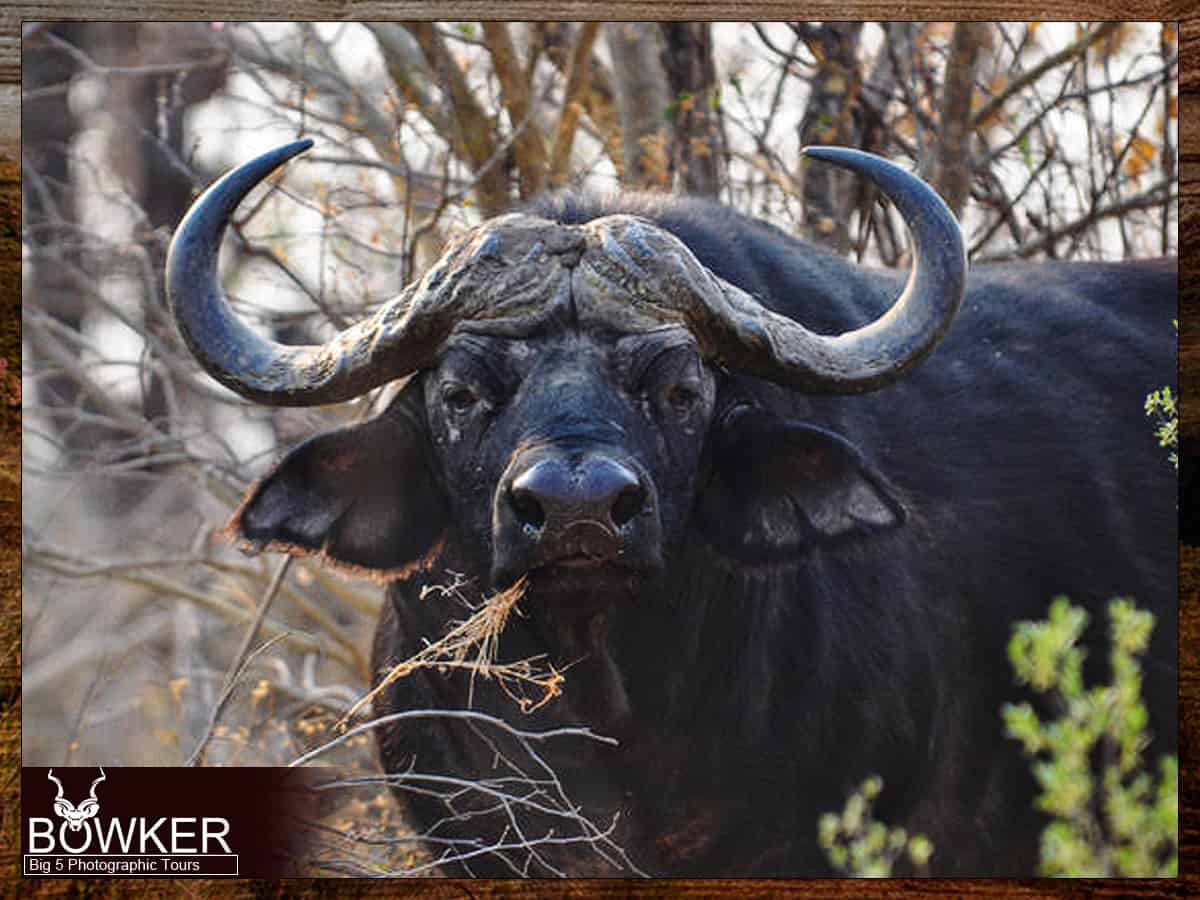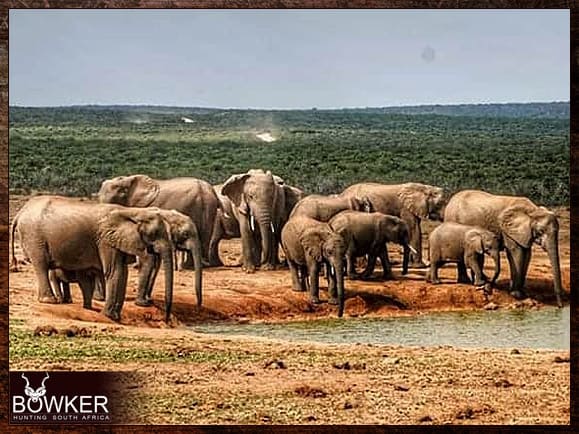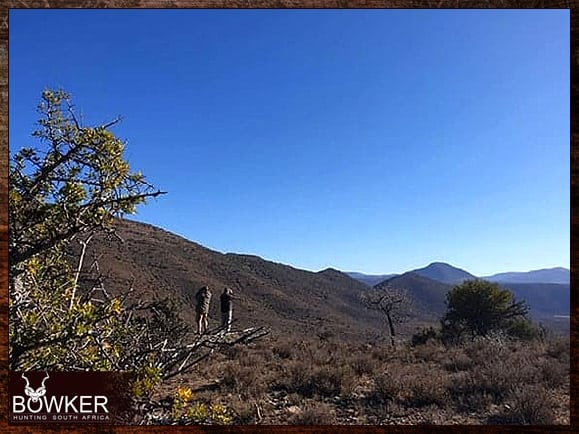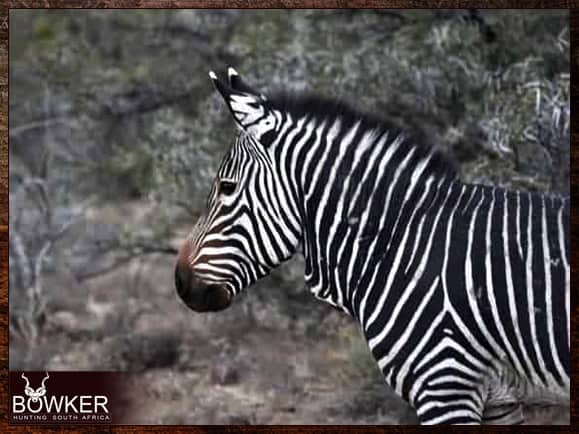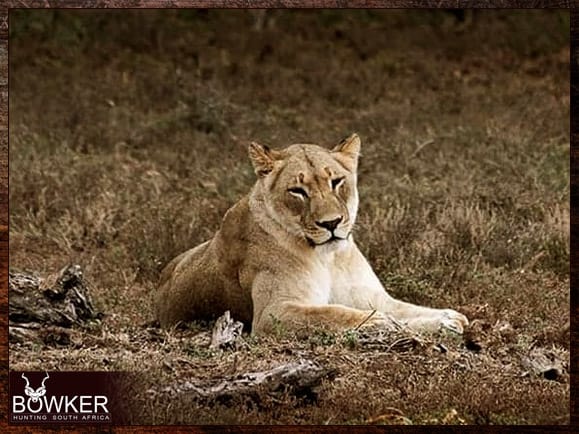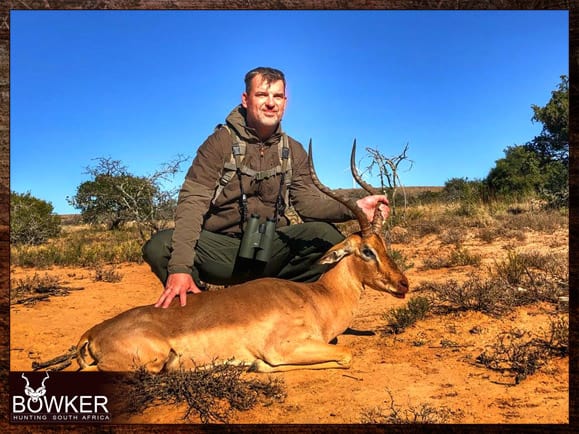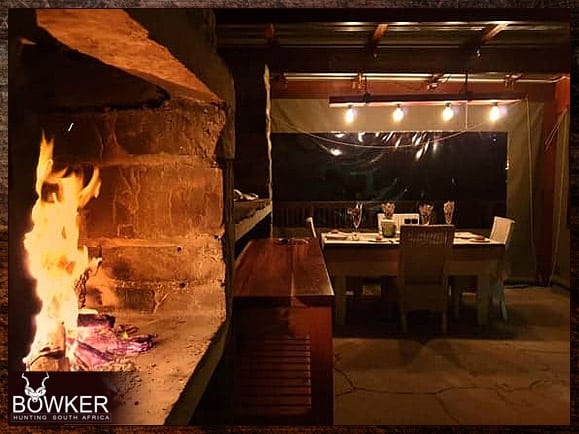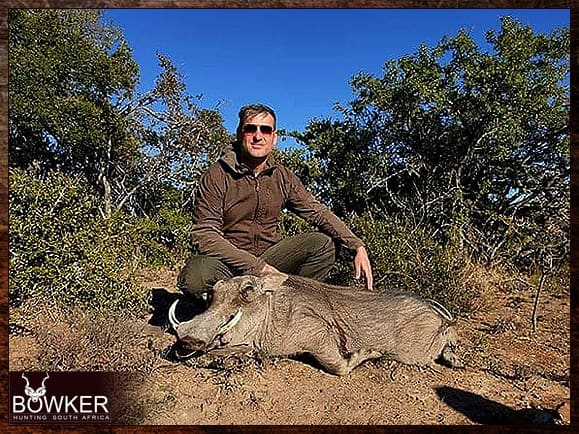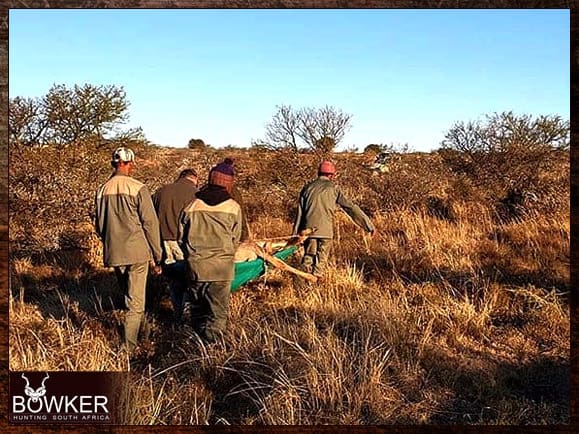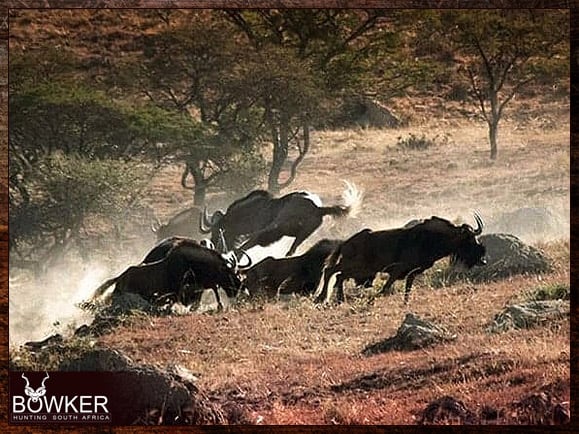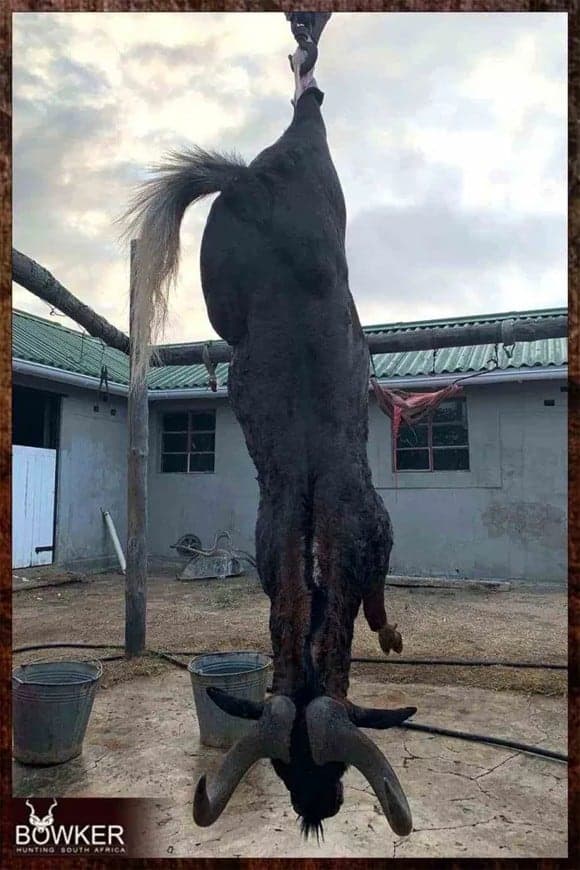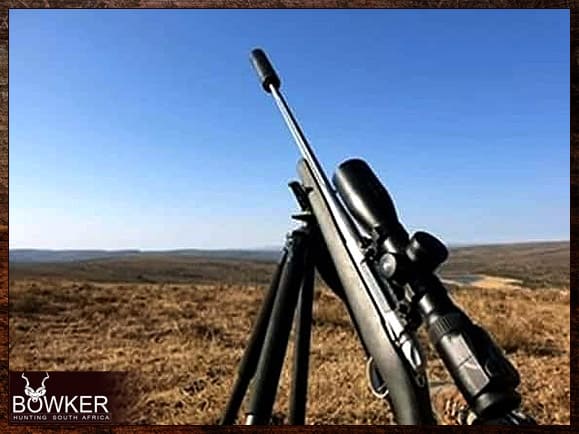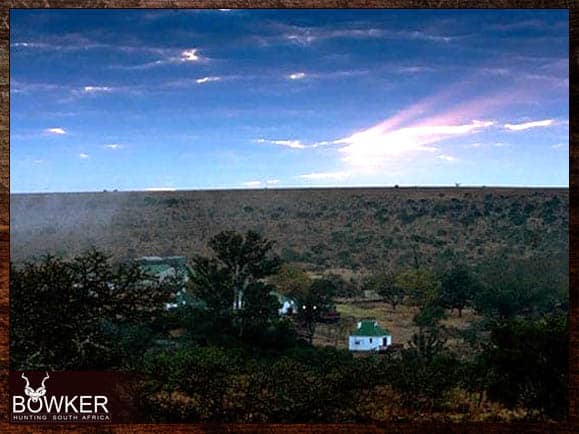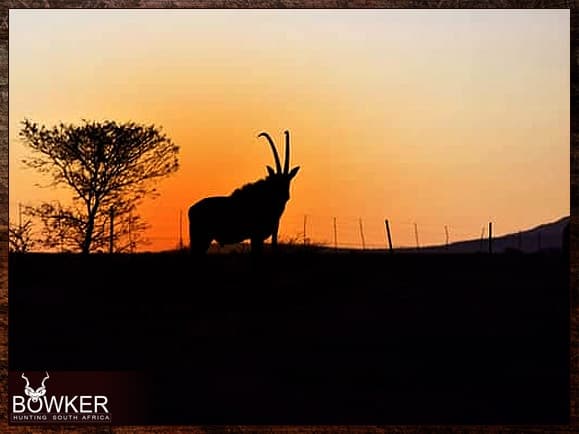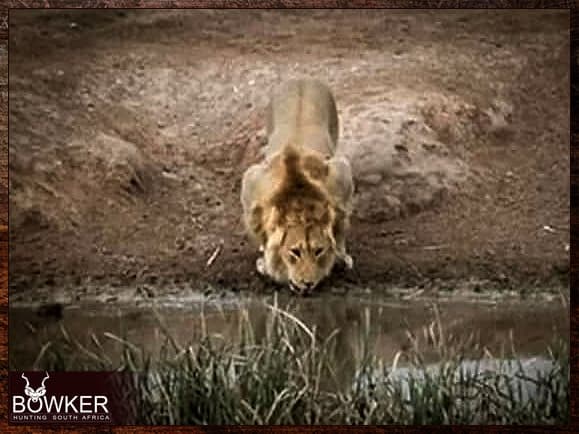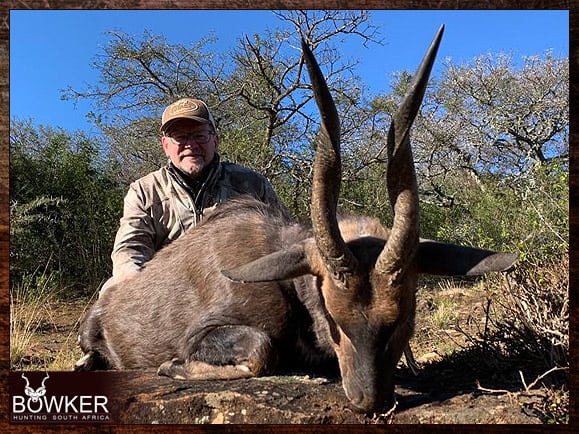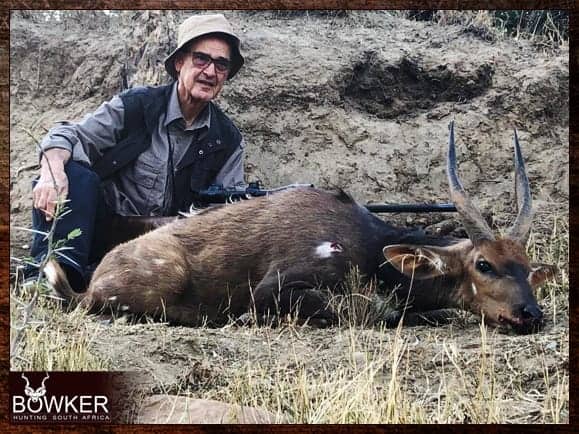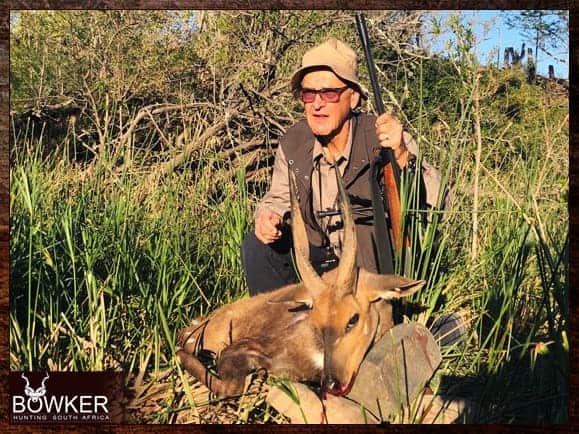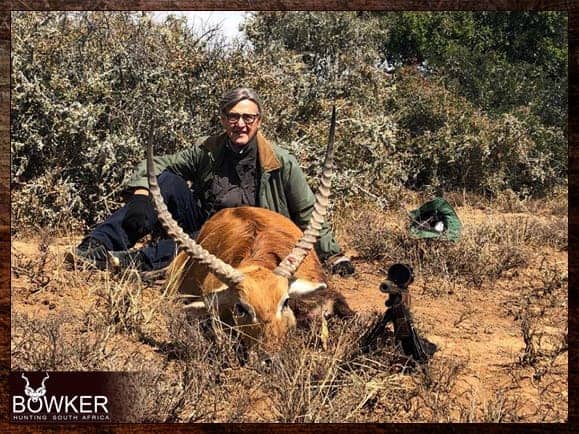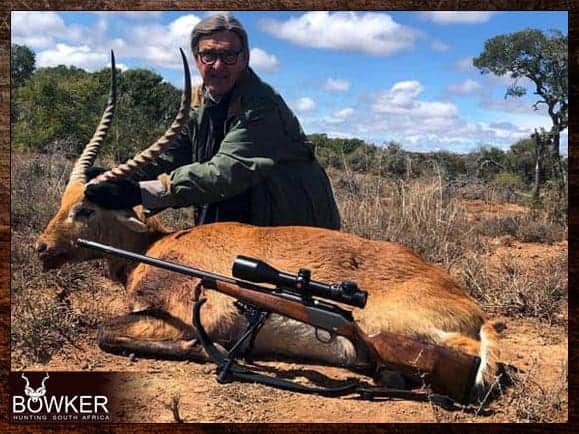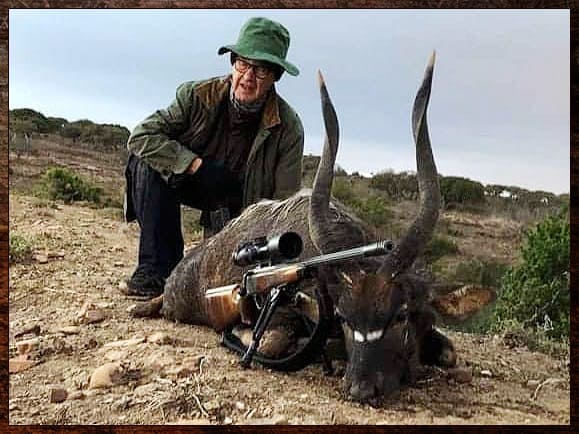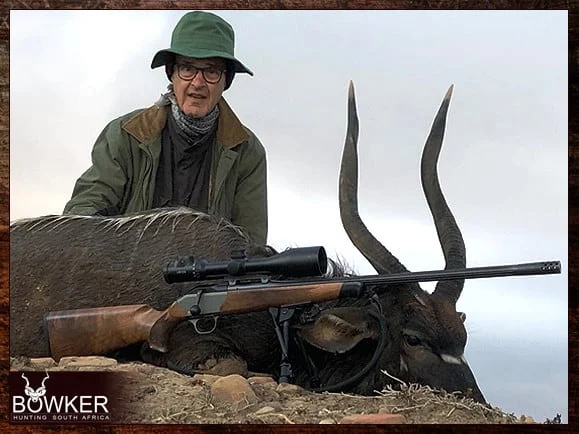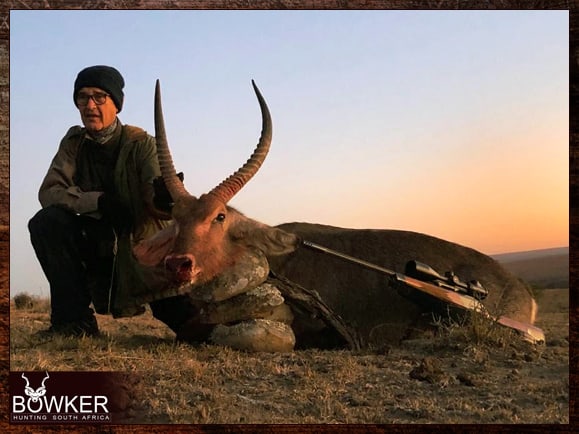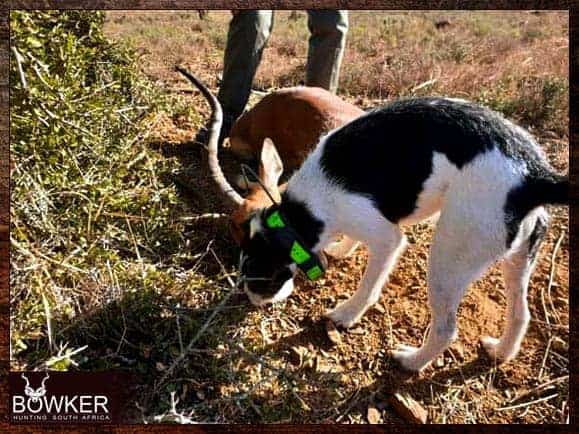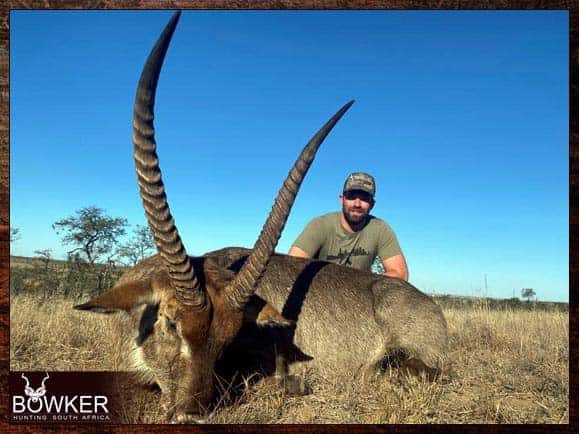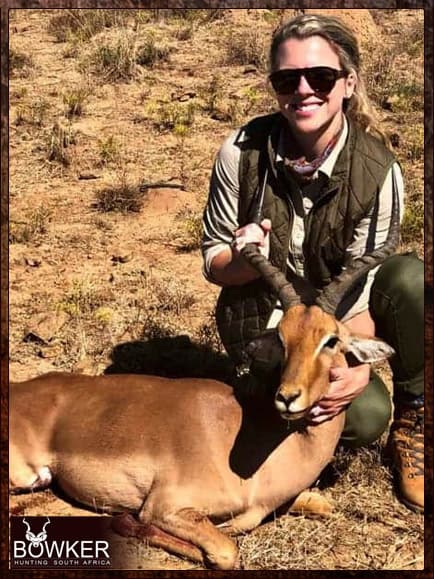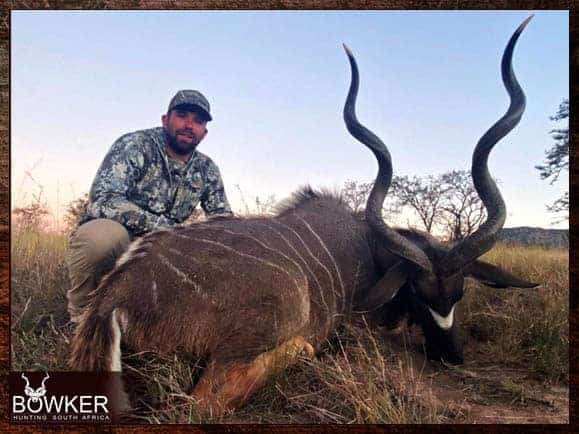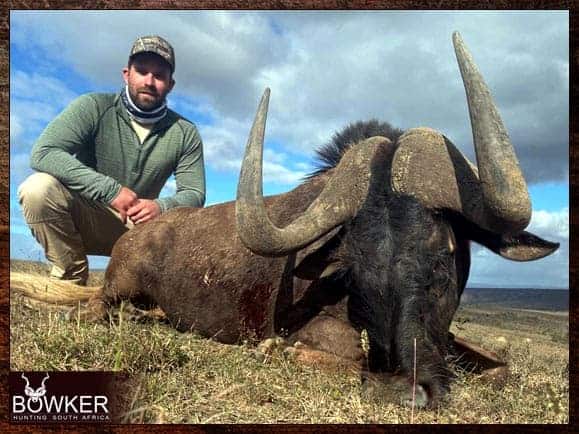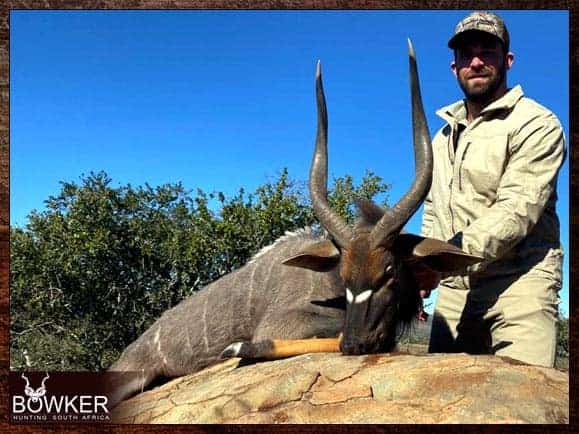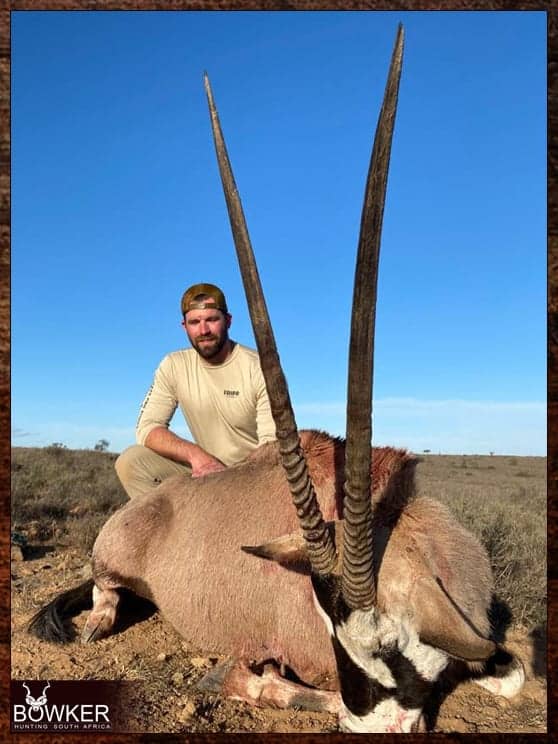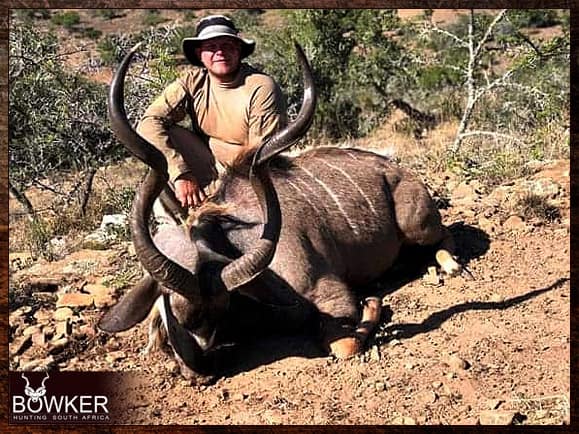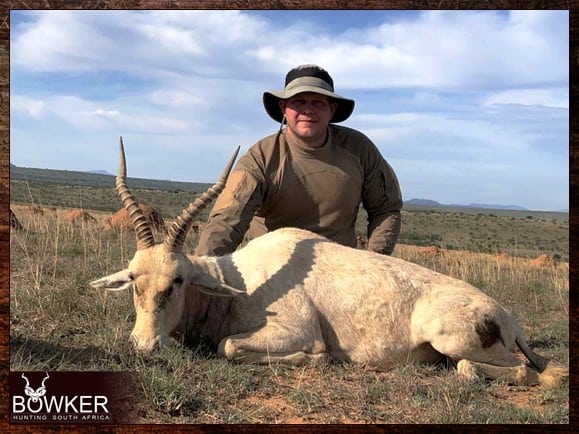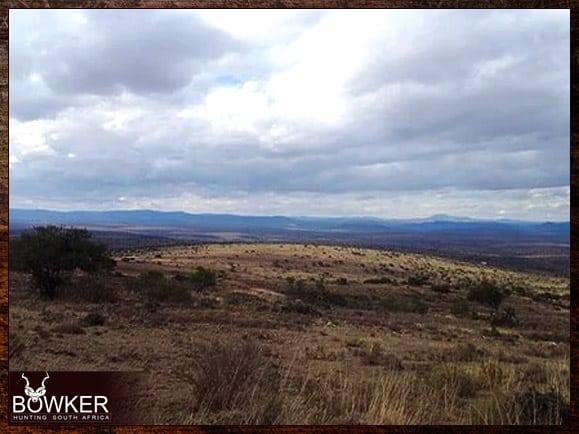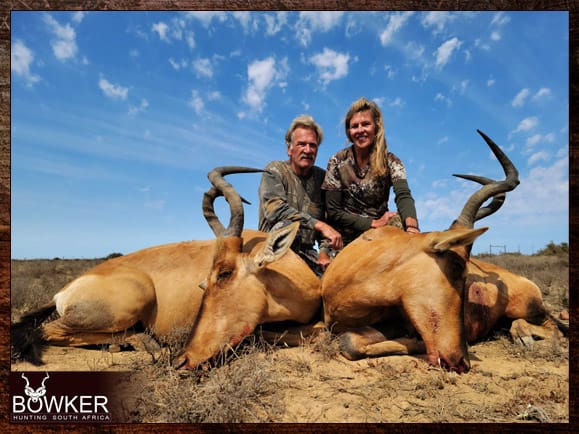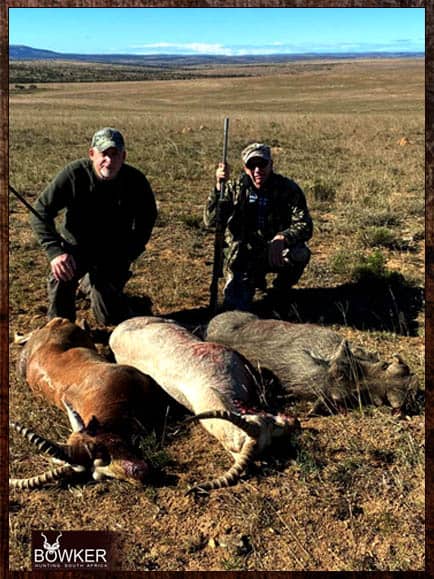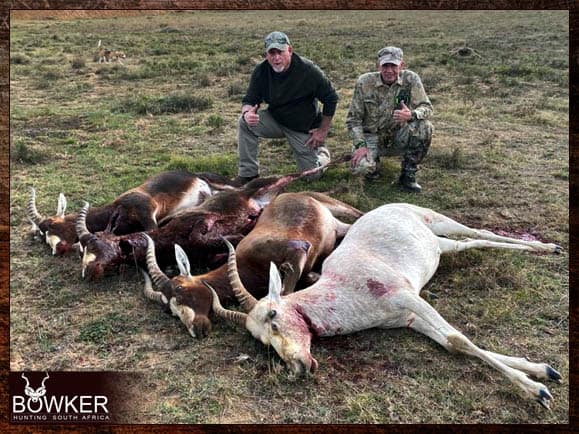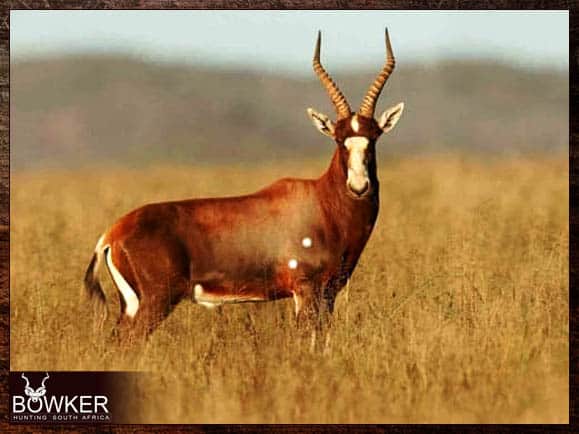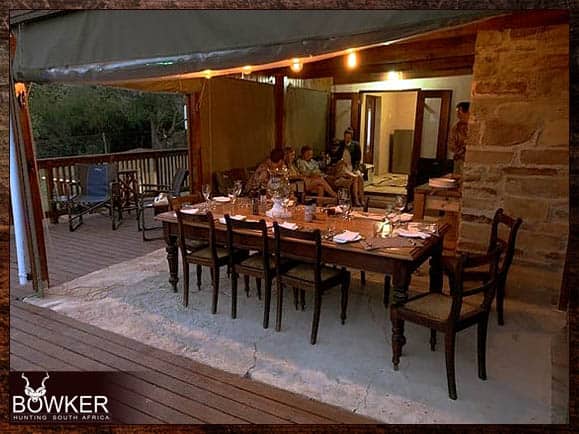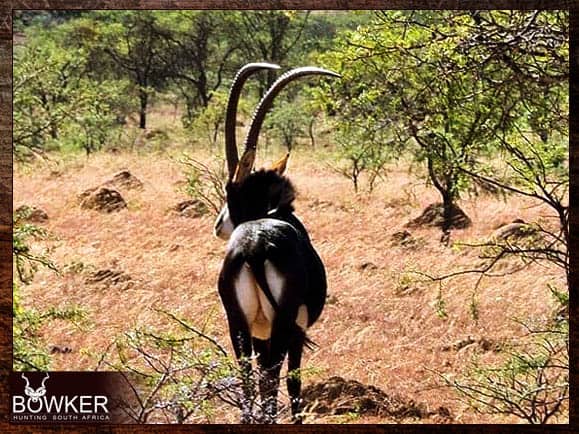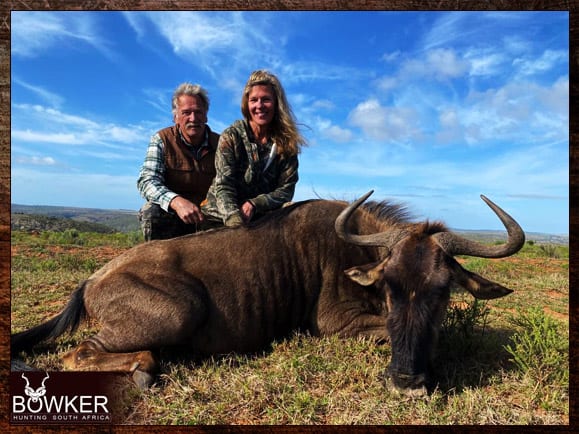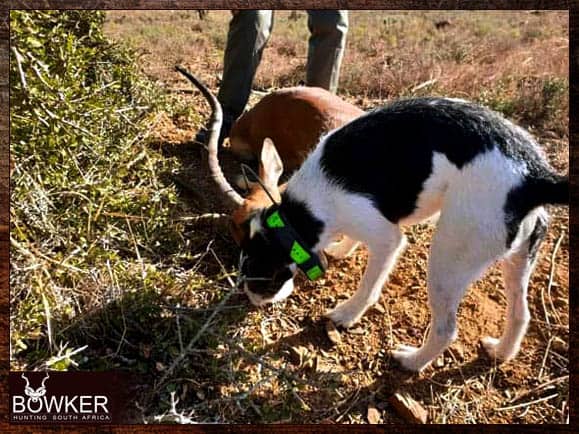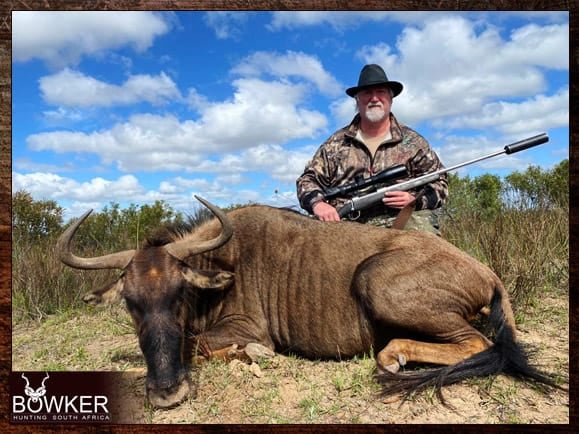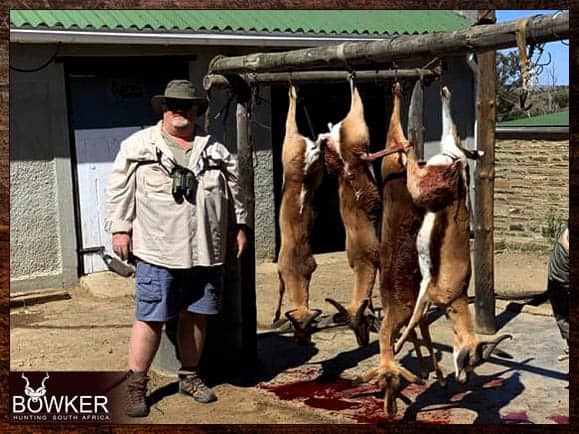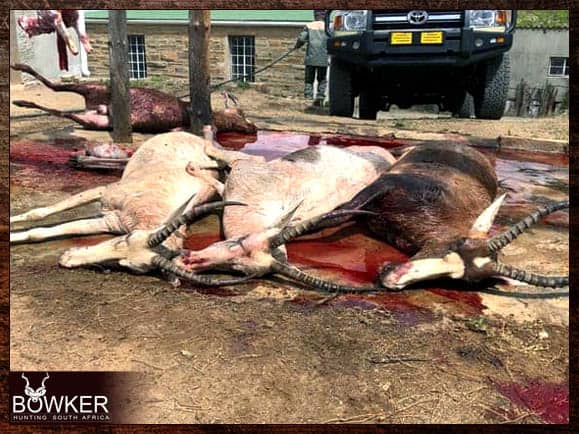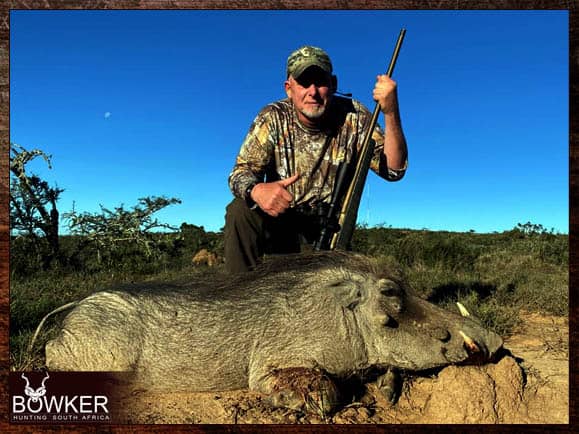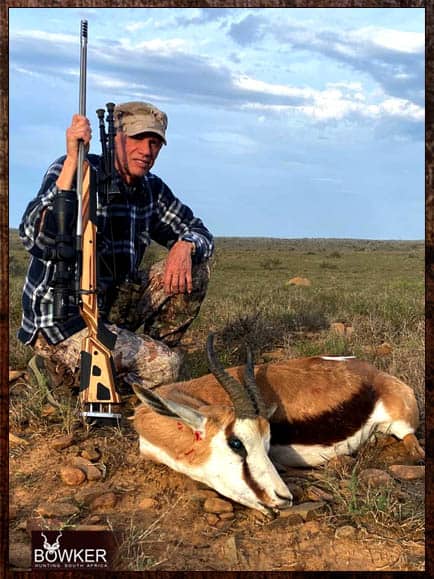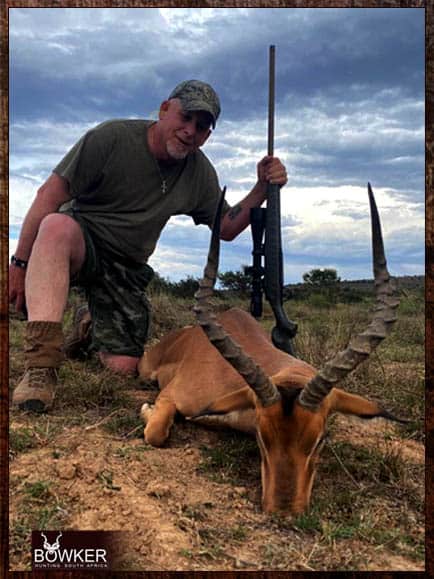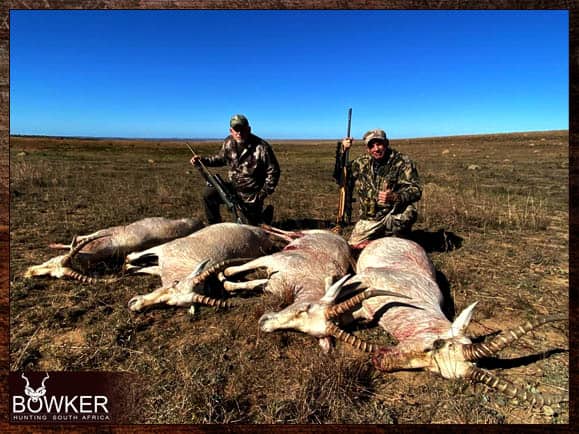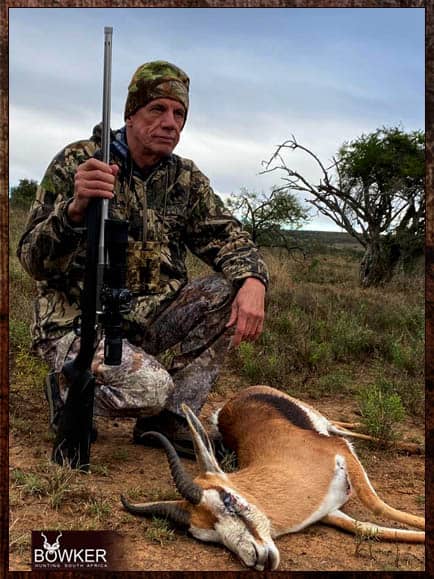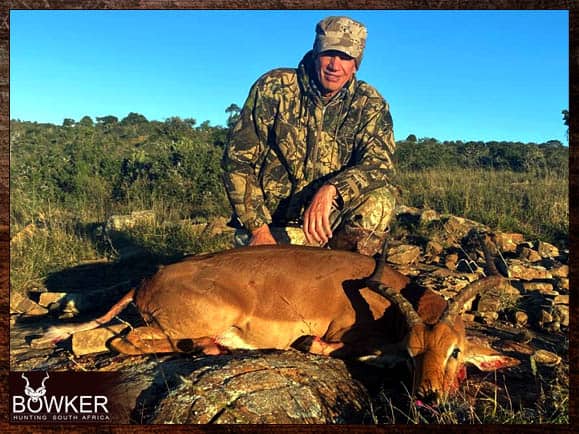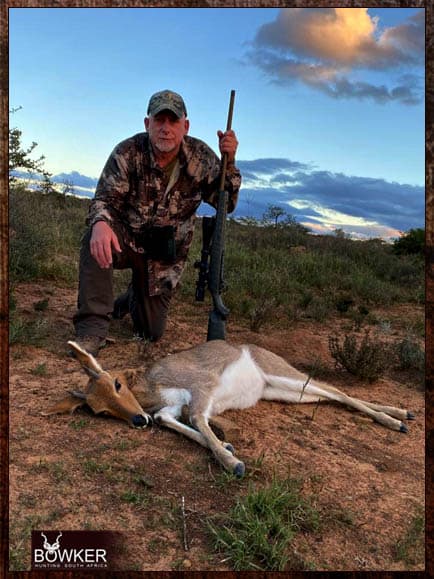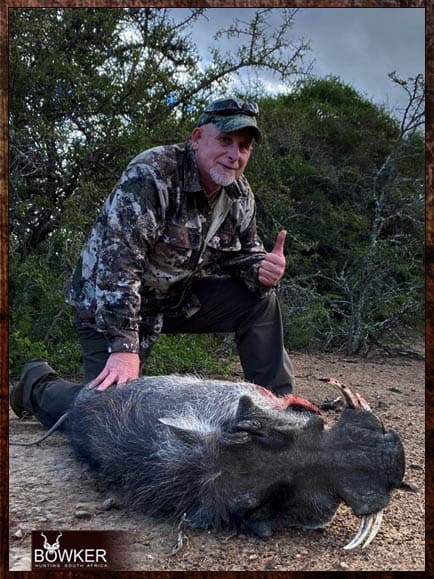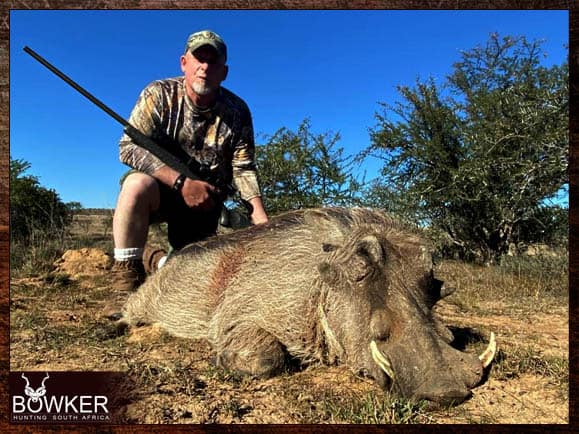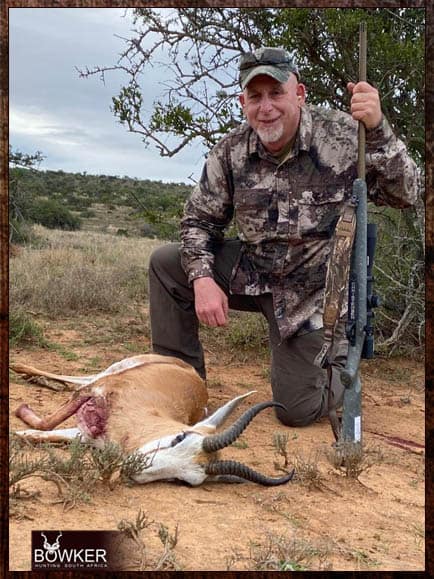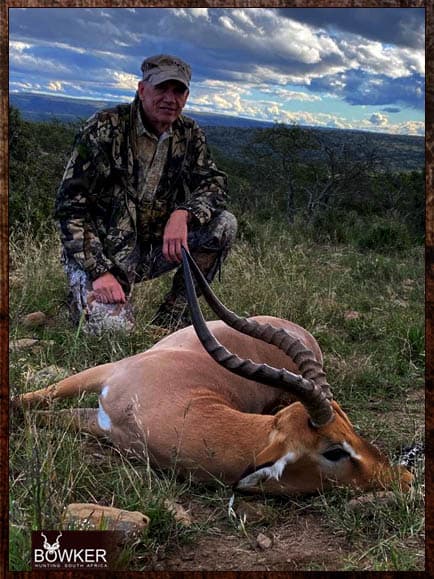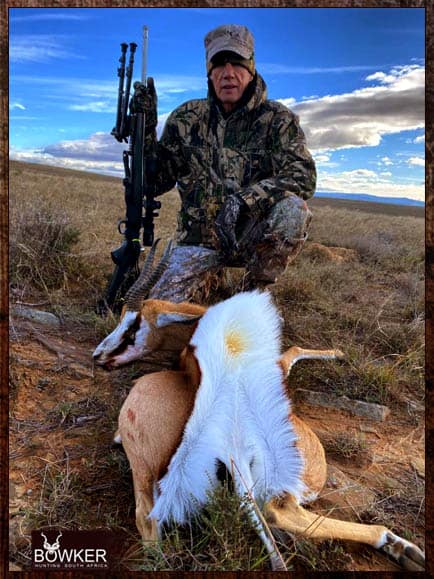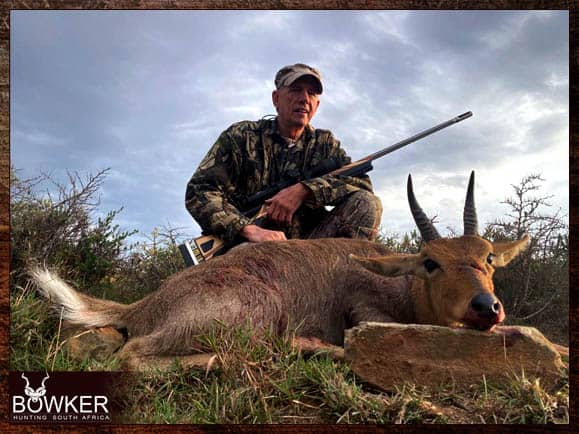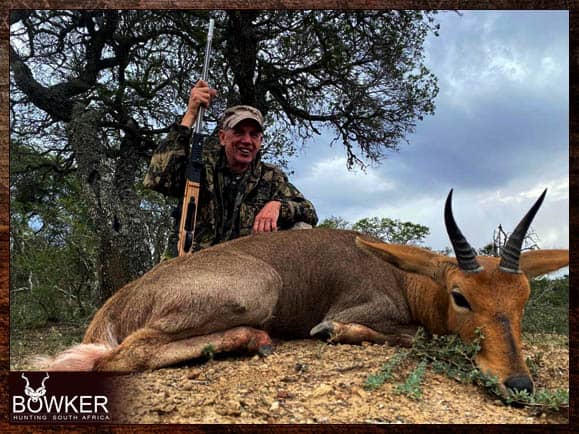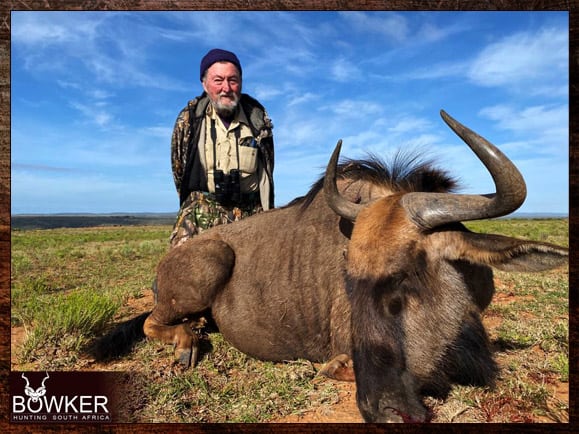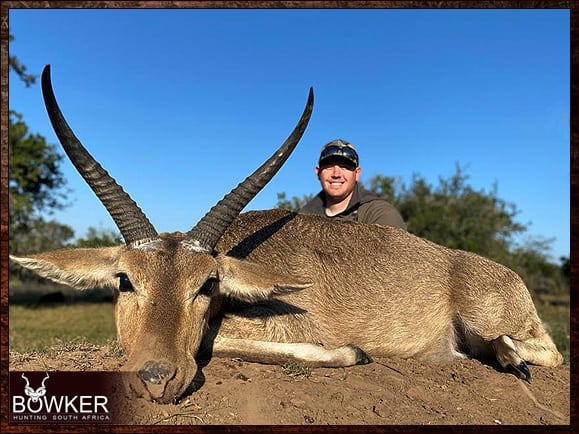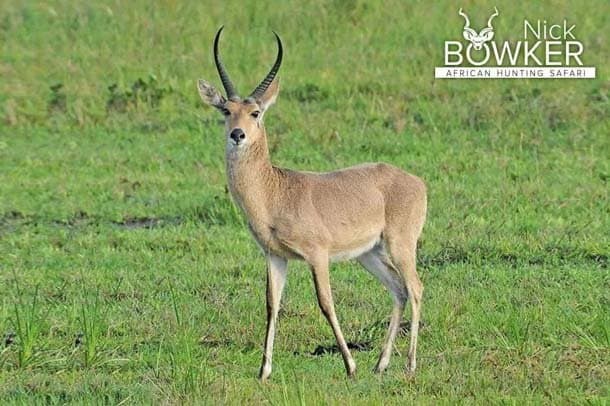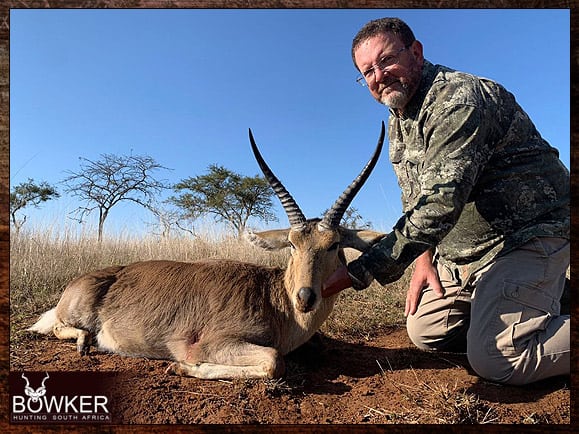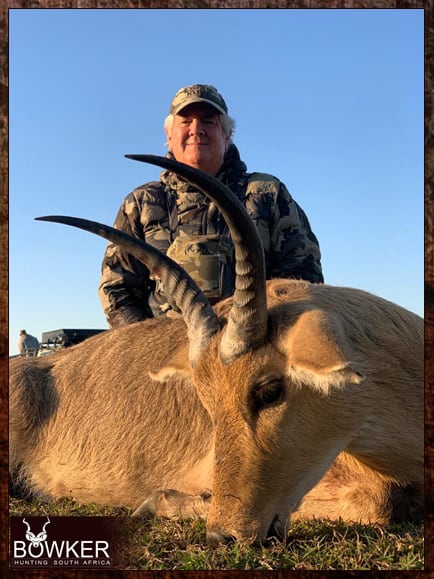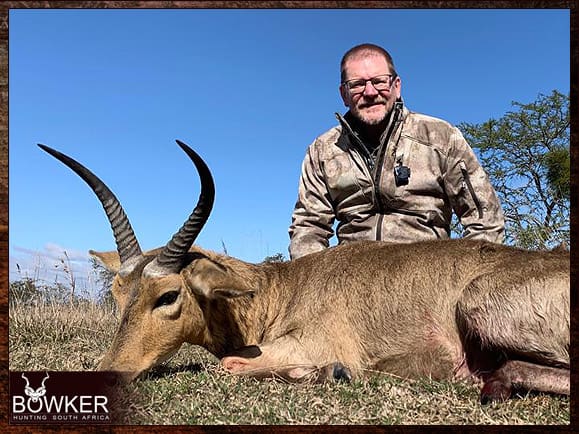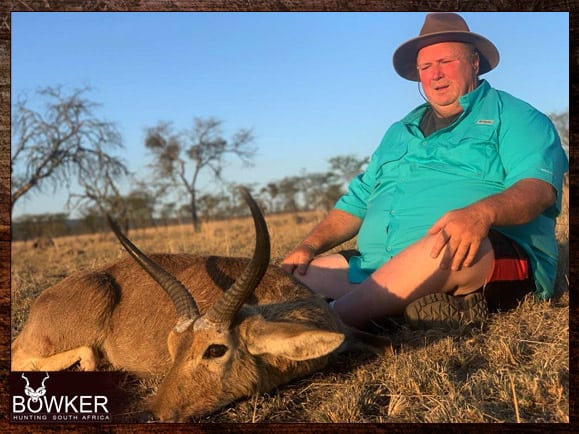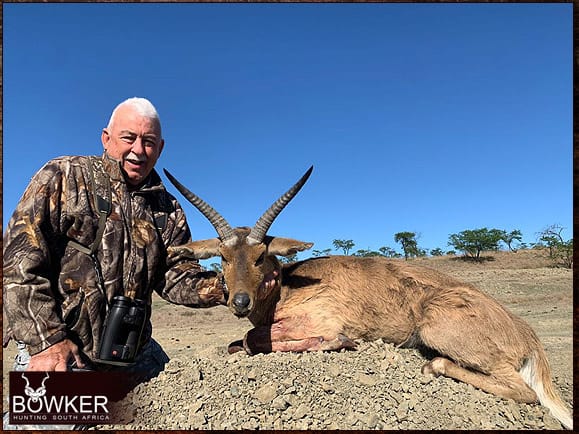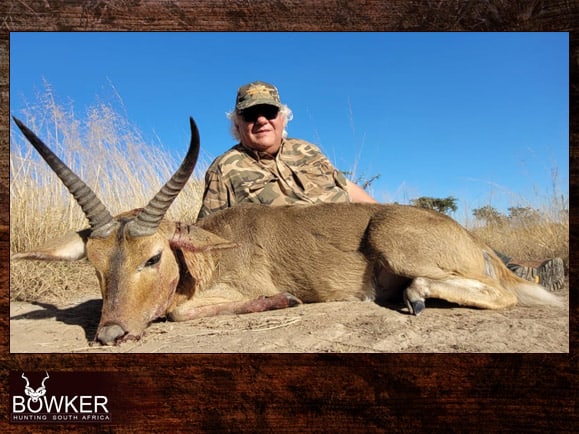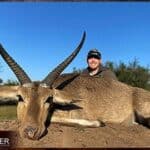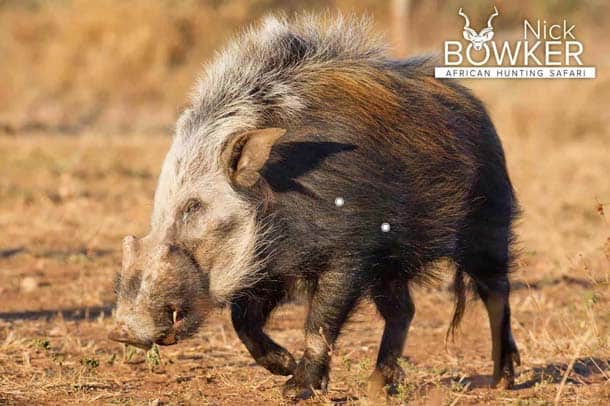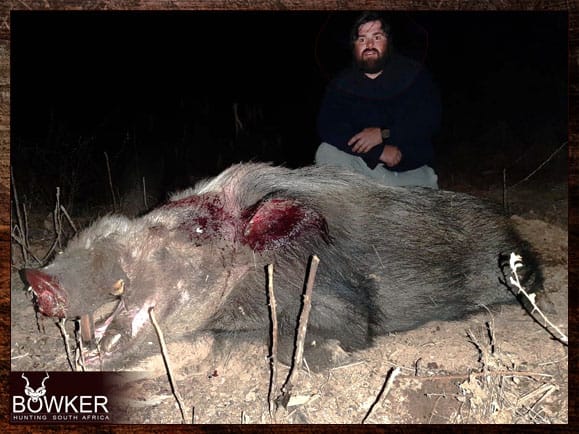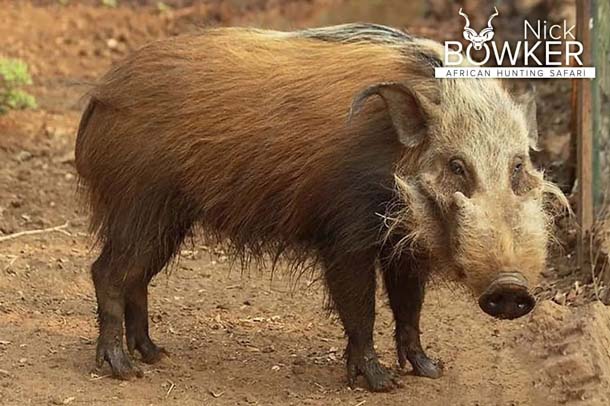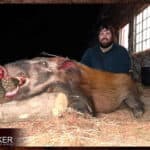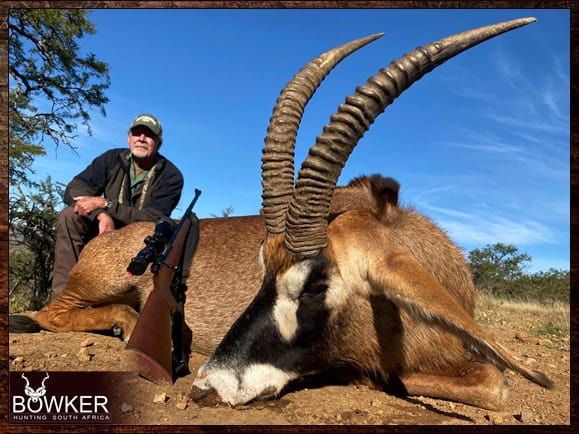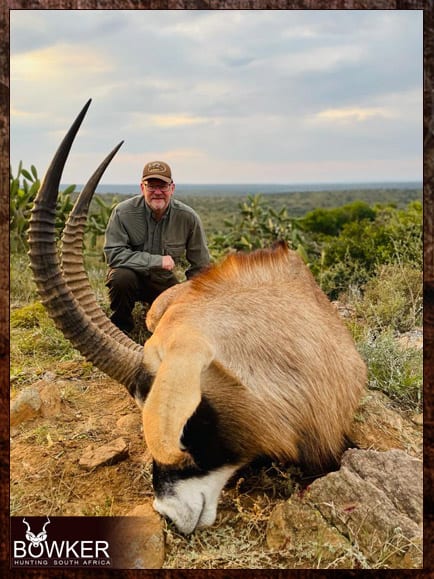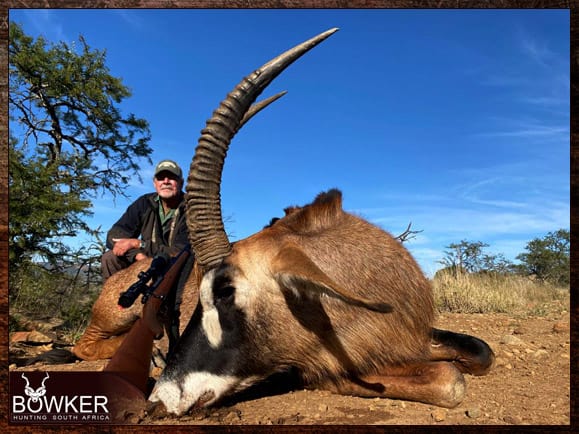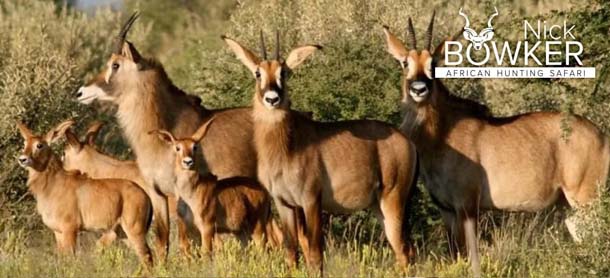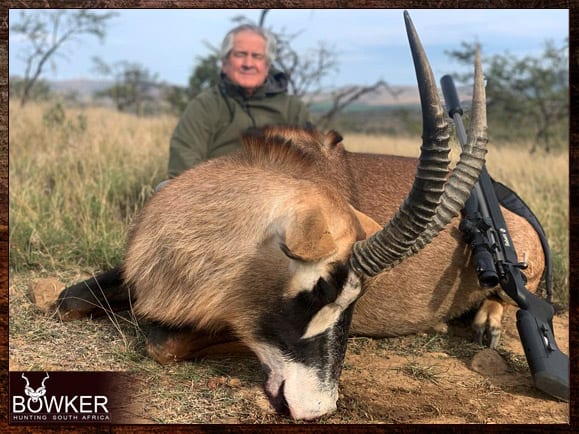You know, one thing leads to another, and a year later, Thomas and I are on an airplane for my African hunt. Wild! My first Africa hunting trip.
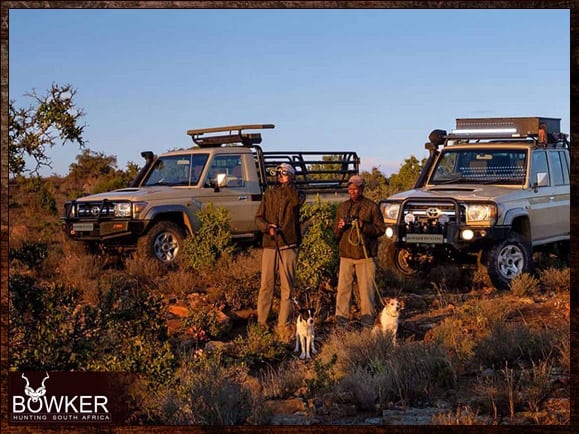
First, Teresa and I were invited by our good friends, Mark and Dianne, to stay a week in the mountains of Colorado in my Dad’s favorite town, Pagosa Springs. Having just traded correspondence with my half-brother Thomas, also of Pagosa Springs, it seemed the perfect opportunity to catch up with friends and relatives in the clear, clean mountain air. And so it was.
Once, we settled into the beautiful condo on the lake, hosted by Mark and Di. We were invited to dinner by Thomas. Sister Donna was as gracious as ever and cooked a fabulous feast for the whole tribe, and everyone had a good time.
While touring their quaint log home–Teresa wants one–Thomas showed us the African trophies he and Donna had taken on their 2010 safari. You know one thing leads to another, and a year later, Thomas and I are on an airplane to Africa. Wild!
Since Thomas had already been, it was an excellent opportunity to go with an old hand arranging hunting dates with the professional hunter (PH), clothes, flights, customs, cartridges, and a whole lot more.
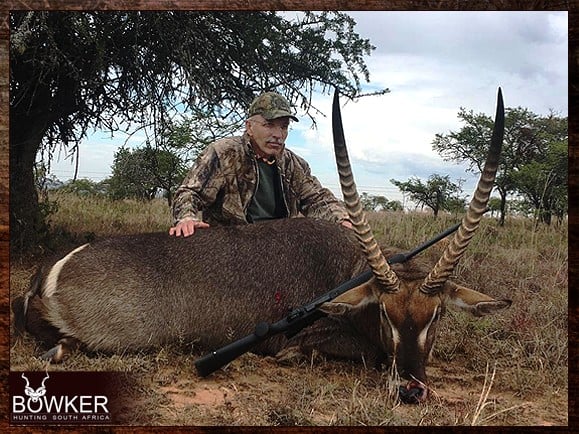
Ten days was just a perfect-plan
Ten days was the perfect plan for spending two weeks with shooting, packing, travel, jet lag, etc.
Then there is the list of animals we could harvest. It is daunting. They run from small-hard to see and hit to huge-easy to see and harder to kill. The diversity of habitats in the East Cape of South Africa is astonishing, from the low, dark river bottom to high baldy mountain tops within an hour’s drive.
Our host, Nick Bowker, and his brother Rob, rugged 5th generation South African “farmers” of English descent, were most gracious and met us at the “Oliver Tambo” airport in Port Elizabeth in the Eastern Cape. A small airport on the order of Colorado Springs or Corpus Christi. Guns, ammo, and luggage are all right there, and a great relief after a nearly 24-hour flight from Minneapolis, Houston, Atlanta, Johannesburg, and finally, Port Elizabeth.
It took about two hours to the lodgings in a new Toyota Land Cruiser. The main road was under construction, so we went through a more residential area. A government shantytown was peculiar with the one-room shacks and hydro-solar water heaters atop nearly everyone. The garbage along the road exiting the Port Elizabeth area was everywhere, but the further from town we went, the cleaner the road and surrounding area.
Finally, we approached the farmstead over a seemingly endless series of “speed bumps” engineered to divert the seldom but heavy rain away from the unpaved gravel road. Up and down we went; after about a mile, Thomas noted there were 20 in all!
A couple of hours to the hunting lodge
The charming old single-story farmhouse could have been in Wisconsin was our lodgings for our African hunt.
After getting everything sorted out and having a light lunch, we went to find a warthog. As we drove down around the farm, the trackers, riding in the bed of the land cruiser, noticed some kudu cows but no shooters, and then a friendly warthog showed up on a distant hillside.
Would you like a warthog?
Would you like a warthog?” the PH, Nick, asked. Yes, said I. We pulled off the gravel road and through a gate onto a service trail, working our way closer to the hog. Finally, pulling over, the shooting sticks went up. “215yds,” he says. BOOM, the reassuring thud, and a good shot called out.
But wait. Where did that pig go with my tusks? Up the steep hill, we went looking for blood. We followed a good blood trail as the trusty Mr. Russell, Jack, was on the track. It seems he has a real affinity for pork. It took a while for Jack to find my pig but not long to get our attention with a sharp bark. One of our trackers said something in his soft native Xhosa, “fumene igazi,” interpreted by our Professional Hunter as “he’s got blood.”
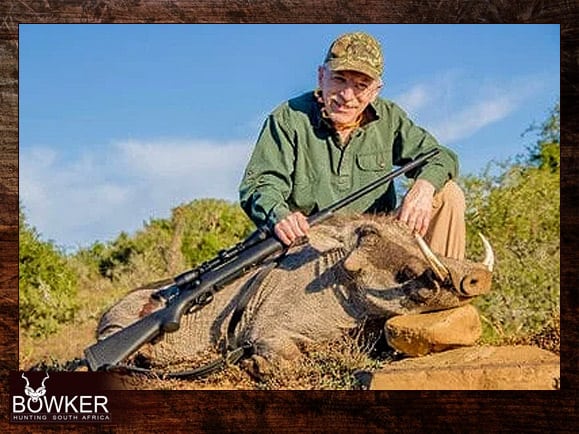
As we quickly followed the barking, the dog and boar came into view. The dog slowed down the pig with remarkable courage and technique… something about nipping off the family jewels gets them all kinds of excited.
I followed the dog looking for a second shot–busting brush like only a properly raised bramble-busting hillbilly can do-I heard the P.H. behind me; don’t shoot the dog! Never considered it, but it was our first hunt together, and as he said, I was in a zone. I suppose the way I walked through thorns must have given him an impression.
Finally, the boar turns to fight.
Finally, the boar turns to fight and then to run: SHOOT, SHOOT, SHOOT, the P.H. yells from behind, BANG another round into the boar’s left flank, quartering away. Two solid hits from the 280, and that son-of-a-pork-rind trotted off again, but Jack was on him like he owed him money!
Twenty yards farther and down, he went with the Jack on top.
My first pig ever and my first trophy on my African hunt, and hunting over that fearless terrier reminded me why people hunt with dogs! Fantastic.
Tune in later for the next edition of “A Plumber in Africa.”
African plains game in the area is abundant
Rob asked why we Americans are so keen on taxidermy. Well, you know it is fun to share your adventures with your family and make your friends jealous. OK, two friends well, one is related, yes, well, my one friend is jealous. You know who you are, I hope.
We were fortunate to see many exotic animals, including a puff adder -on the road- Giraffe, Impala, springbuck, tortoise Zebra, wildebeest, baboons, and mongoose.
By the way, no malaria, dengue, or tsetse flies to fight, so vaccination is unnecessary. T.B. and HIV run rampant in specific native communities, but that is a whole other matter.
I would like to point out that seeing these animals “in the wild” is much more interesting than any zoo and undoubtedly better for the animals.
The animals were, in fact, residents of the “farms” we hunted: some transients and some more permanent, depending on the particular traits of the animals in question.
Naturally, they compete with the farmer’s livestock but are tolerated and protected for the value of the hunter’s store in them. It is more likely a tasty sheep is poached than any exotic plains game animal living in the East Cape.
Ownership of the land is mostly private, so most fences were quite familiar, four-string barbed wire, with some for cattle and others for the many Merino sheep on the place. Few were over 4 feet tall, and none could keep any of the wild animals we saw. Going over barbed wire took me back…
It reminded me of New Mexico.
It reminded me of any high-mountain plain and made me homesick for New Mexico, but the seemingly endless termite mounds on a good part of the dry rolling plains. Think of an anthill, some 2 feet tall and hard as a baseball. At least half are dug out by nocturnal visit of the local aardvark (Afrikaans for anteater.) A termite hill can make an excellent rifle rest, though I missed the first shot at my Waterbuck with a perfect rest on such a construct. The closer you get to the ground, you will likely hit twigs, grass, and such. That’s my story, and I’m sticking to it. And Speaking of sticks, you will need to practice using them. I had great difficulty and frankly might have shot better off-hand, free hand in Africa, following many years of shooting silhouette.
Now the ranch/farm next door did have the 10′ electrified monster fence you always hear about and over-grazed fields from lack of proper management. It seems a Texan owns it. Go figure.
African plains game in the area is abundant, and most are available to any hunter willing to pay for the privilege. Each animal has a price according to supply and demand. Generally, the bigger they are, the more they cost. South African hunting packages offer a wide variety of trophies. You will see the amount of work involved as we go along.
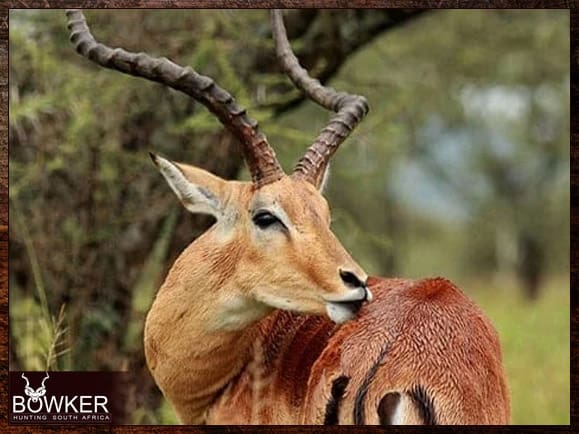
Firearms
There is a lot of speculation about the firearms one needs for a plains game African hunting safari. Naturally, you can take mine to the bank. First, let’s start with getting them to Africa and back.
Next, we spotted and stalked a beautiful Impala just a few miles from the farm. Many watchful eyes in his harem still got close enough for a good clean miss on two different stalks! I took the rock wall rest instead of the sticks.
I had shot off the sticks at home but hard to practice on moving game. Complained that the animals should be tied AND hobbled! It did seem to get better after that. The following day, I stopped at the range and checked the zero on the 280AI…maybe a bit high.
Boots
Before leaving for Africa, I read a lot about what to expect. Many insisted on special “quiet” boots only made in South Africa. After checking the price and availability, I opted for a pair of low Clarks, all leather, relaxed, and comfortable.
Good to have an extra pair, so I took a boot I used when shooting down at the Whittington Centre in Raton, NM. I could have gotten by with any non-insulated boots with some ankle protection.
The P.H.? I found him wearing a low Danner made in the USA! And, of course, the trademark gators I could only see at Midway. Perfect for keeping sharp flora out of the footwear.
As for the thorns, burrs, and such, I found the combination of low boot and gators quite comfortable. April being their fall made for perfect weather, sunny 72 and 60 at night for a good hike and sound sleep. Hunting in a T-shirt and shorts was an odd experience on my African hunt.
My African Hunt – Nyala Hunt
Next on down the road to stalk the beautiful Nyala. It wasn’t long before our trusty trackers spotted an old bull halfway up a dark hillside. Fortunately, the male is quite distinct from the female, and another 200-yard shot off the sticks.
A solid hit in the high center, not taking any chances after the Impala fiasco. A quick follow-up shot off-hand (freehand in S.A.) in the vitals, and all was good. Suitable for the farmer and the hunter to harvest old animals fed for years and save from old age’s ravages.
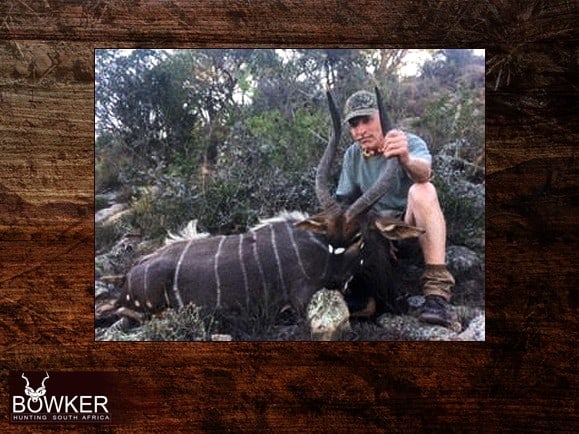
The Eastern Cape
We left off in the East Cape of South Africa, a place with a long history…
From the early colonization by the Dutch in 1652, the British takeover in 1806, and their defeat of the Dutch Boers in 1902 to the end of Apartheid Africa in 1994, South Africa has never been dull.
When an American thinks of Africa, especially one of my generation, he can’t help but imagine Tarzan’s Africa with friendly elephants, silly chimpanzees, and ferocious but manageable lions at every turn. Then, there is the jungle with convenient vine-to-vine transportation and a liberal dress code.
Then there is UNICEF Africa with starving children, enormous heaps of trash, and malaria everywhere.
My African Hunt
Wanting to be fully prepared, I read a lot about Africa and decided malaria would be an excellent place to start. But alas, malaria has been all but eradicated from the Cape. No worries there, but for the environmentalist trying the save the planet (ban DDT), human cost be damned.
The South Africans (S.A.) have a nasty tick, but who doesn’t? At any rate, spending most of our time on the lake or down by the river on the farm, ticks, and mosquitoes-Spanish for “little fly”-are everywhere. I likely have Deet in my blood and no Lyme disease yet. In fact, we suffered from no bugs to speak of, but we were there in the dry season.
This leads me to another idea I had about Gin and Tonic. Being one of my standby cocktails and part of my English heritage-on my mother’s side coming from Adams, Smiths, Light foots, and the like–wouldn’t it be great if a “medicinal” G&T would stop all threat from these various tiny marauders? No such luck. It seems the FDA finds quinine too dangerous for 21st Century man, so the allowed dose in anyone, or ten, G&T’s is just too low to inoculate even a suitably imbibed individual.
My African Hunt – Gin and Tonic
As for drinking while hunting. Yes. After each hunt, we started with wine and local beer–both great–served in the old powerhouse, which used to house a Lister diesel generator. Miles of wind-driven generators across the windy planes stretch out to the northern hills. Power can be unreliable, so a small Honda keeps the lights on when necessary.
The old powerhouse is quaint, seating four comfortably at the bar with a fantastic veranda and outdoor fireplace. A zebra rug underfoot.
After a few nights, I thought gin and tonic would be nice, even if they offered no protection. When I ordered one before dinner, our host, Nick Bowker, seemed quite surprised volunteering that it is a popular local drink. He and his tribe are English, but few American visitors requested it on their African hunts. I have to say it is tonic that makes a great G&T.
Dinner was the back-strap from a Mountain Spring Buck. Excellent. And what is any meal without a sweet dessert? Never disappointed.
Oh yes, and the hunting.
My African Hunt – Kudu Hunting
The Kudu was on my list. He likes heavy cover, and the first afternoon out, we drove up a trail and stopped for a moment in dense brush. As I looked out the window of the Land Cruiser and the “Grey Ghost” was looking back at me, not 20 yards away. That didn’t last, but after a long day hunting, Nick found another down by the river in dense brush.
We stalked afoot for a mile or two until within 200 yards or so. I threw up the 280 Ackley stoked with 160 grain Nosler Accubonds at 2800 fps. I had difficulty getting the rifle to settle down, and he decided he couldn’t wait.
Another quarter-mile hike, and he was curious again. This time was standing dead still and looking right at us. In an instant, Nick had the tripod shooting sticks set up, perfect height and direction. Through up again and waited for him to turn for a nice broadside shot. No luck. I swear Kudo must play a lot of poker.
Finally, with some anxiety, I decided to drop one under his chin.
Finally, with some anxiety, I decided to drop one under his chin. Not ideal, but at 230 yards or so, it should’ve worked. Well, you could hear the solid “thud,” and all seemed happy. I thanked God, prematurely, at about a half-a-squeeze, but wouldn’t you know it, that damned Kudu didn’t know he was supposed to roll over. Instead, he turned into that “Grey Ghost” they talked about and alluded our P.H., two savvy trackers, and Mr. Russell to spite a good blood trail for a couple of miles. Perhaps the tried-and-true Nosler Partition would have done the job?
It was getting dark; we retired and started the next morning again. A day spent tracking over hill-and-dale with the trail running out, and reality sets in. I had shot and lost my first big game animal. It is the ultimate dishonor for a hunter to lose such a beautiful beast to poor judgment. My impatience cost me the biggest and most beautiful antelope and a real two-turn beauty at that. Of course, the “you shoot ‘them, you bought them policy” on an African hunt was in effect, so we all pay for our mistakes, as it should be.
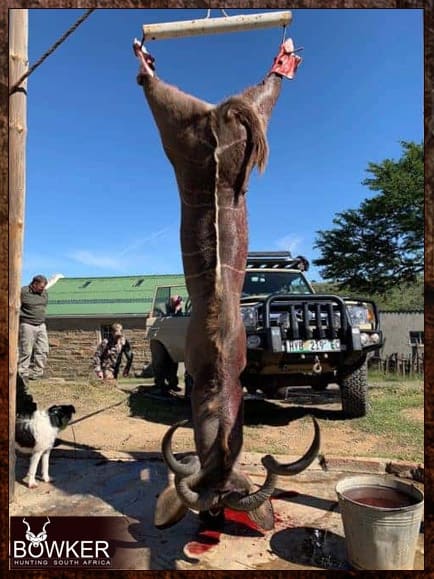
Even the dog wasn’t talking to me
The next morning we went after the Nyala, last reported, and I felt better about life in general and hunting in particular. Thank you, Thomas, for helping me get the order right.
Next installment; Land of the Eland…
My African Hunt – Eland Hunt
Brother Thomas had come to fill out his previous 10-animal African hunt and wanted an Eland in the worst way. I hadn’t decided on an Eland but pulled out the old 358 Norma Mag. This old bolt action was sporterized back in the ’60s on a 1903-A3 Springfield action, sitting in lovely walnut furniture with a custom, deep-blued barrel and express sights. I added a vintage 2 3/4 power “post and wire” scope, anticipating some heavy brush hunting.
After our morning hunt, followed by a light lunch and requisite afternoon nap, under the watchful eye of a lovely Blesbok, we proceeded to a friend’s sizable farm in the mountains about an hour away, going northeast, past Adelaide.
After much driving up the steep, rocky roads-much as Colorado-we arrived at a high-country farm at the base of an enormous box canyon. Then up an even rougher road, every rock enhanced by the durable but unforgiving straight axles on our indestructible Land Cruiser, we gained a commanding view of most of the canyon and cultivated farm at its base.
After some serious glassing, my ancient Leica 8—35 binoculars were of little use in such a big country, so the smart guys used their 10—50 binoculars built by Zeiss and Swarovski, all laser rangefinder equipped.
Finding animals several miles off is an acquired skill
Finding animals several miles off is an acquired skill, and prairie dog hunting doesn’t count. A bit like elk hunting without the snow. I did see many animals, including Black Wildebeest, Baboons, and Zebra, but few before the others had already dismissed them.
Finally, we were ready to have a stalk on these enormous beasts.
There was a herd of more than a dozen bulls and a good number of cows separated by a few dozen yards opposite the hillside we were glassing from a couple of miles away. The plan was to go back down to the valley bottom, have a leisurely lunch, and then send the two trackers, with Mr. Russell, to drive the bulls back to us on the opposite side.
We dropped the trackers off to the canyon’s east side and drove over the west for a half-mile hike setting up a hundred yards or so above the canyon floor. Then we waited and glassed, watching the trackers deftly cut the cows from the bulls, pushing them down and away while the bulls came around the bottom rim of the box canyon at a leisurely pace, as if it were their idea.
After an hour or so, we noticed the sizeable herd of wildebeest milling around several hundred yards to the north and between the eland and us being driven our way. They seemed to be always moving, and when the eland approached, they began to get all excited, moving our way and then reversing back to the north.
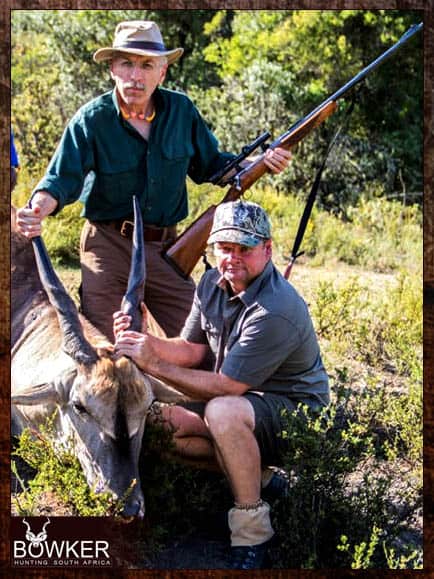
Comical honking, jumping, and general hysteria
It wasn’t long before the comical honking, jumping, and general hysteria brought both wildebeest and eland running right at us, then splitting this way and that. One wildebeest, then one eland, then three wildebeest, and so on, going up and down around us until I couldn’t tell where they had all gone.
Our Professional Hunter signaled silence and for us to stay put while he gingerly walked 10 yards north of our stand and stopped cold. After a minute, he back up slowly, indicating the eland was just in from of him a few yards away. The wind was right, and we set up just behind our position as the bulls worked their way below us and began to run back up the hill.
Nick had his sticks up, and Thomas was in position with his new Model 700 Remington in the traditional .375 H&H at the ready. Just then, several bulls came pounding up the hill, trying to get around us and back up the mountain to heavy cover. They were less than 50 yards from us and made quite an impression as they pounded away.
My African Hunt – “No time for sticks.”
There was no time for sticks as I watched Thomas smoothly follow and touch off a .375 at what looked like a Brahma bull. As the huge bull rolled over at the crack of thunder from Thomas’s compensated 375, the P.H. turned to me, saying: Do you want one?
Sure. I stepped up. Which one? The second. As the first bull cleared, up came the second and my vintage Norma Mag. Finally, a running shot in the hill country, just like home. The 2 3/4 power Lyman with post and cross-wire couldn’t have been better as I shot the beast quartering away uphill. The 250 grain Nosler partition drove through his hip and stuck in his hide opposite his lungs as he instantly rolled over, feet kicking in the air.
Two bulls shot about 20 seconds, and as many feet apart were both DRT, dead right there. Incredible!
My brother John saw the picture of the four-wire fence we traversed on our way out and joked that they almost made it. The fact is they say a 1-ton eland can jump a ten-foot wall. I don’t know if our animal weighed a ton, but it did take eight locals, a Professional Hunter, and a less than average-sized plumber to get one on the back of the Land Cruiser!
Both animals were typical in size, with the Professional Hunter pointing out Thomas’s likely older with a broad “brush” and wide base for horns a bit shorter than mine. Diplomatic all the time that Nick.
More fun than any human should be allowed to have.
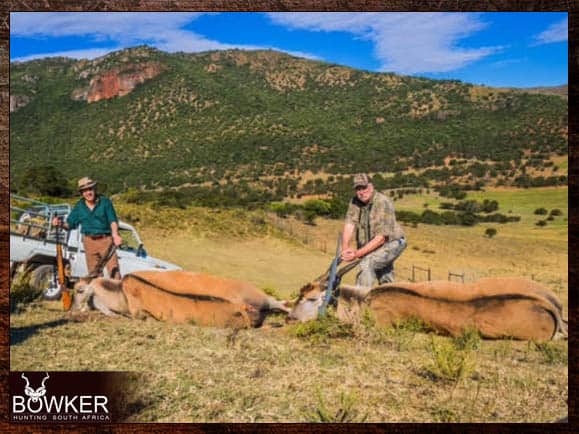
My African Hunt – Brother Thomas and his Warthog
Thomas was stalking his Warthog on the other side of the ridge we were hunting. When the Kudu bulls took off, we hiked over to help.
The trackers had the animal spotted but couldn’t see where he went exactly. Finally, Thomas and our Professional Hunter, Nick, decided to kick the bushes and see if the pig would move. Yet, with all eyes on the spot, they had to nearly step on him in the middle of his favorite afternoon napping place.
We all watched as Thomas swung his 257 Weatherby dropping the running hog between us with one clean shot. Perfect follow-through.
Jack was pleased claiming the pig as he always does.
Buy the way, I know a few of you are card-carrying members of Sierra Club, but here’s some real-world information on hunting for the bleeding-heart relatives we all suffer with.
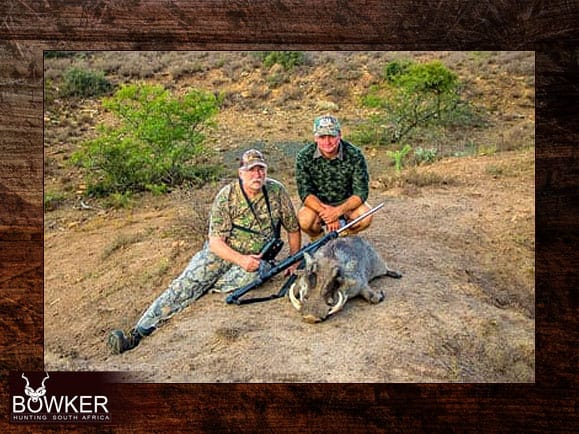
My African hunt – Waterbuck hunt
The night before, Nick asked if I would like another crack at that big Waterbuck, adding that it is getting kind of personal. I agreed, and the next morning off, we went betting he would still be with his cows.
After glassing a bit from afar hillside, we saw them just where we left them a couple of days earlier.
The stalk would be a long one, down into the valley below and up the other side. Nick, one of our trackers, and Mr. Russell left the others to keep an eye out and give a call on the radio if anything came up.
We were following a sheep fence on the way up the other side when a sow and piglet ran up along the other side. I was sure they would alert our bull, but just as they got up the hill, a hundred yards or so ahead of us, down came a Waterbuck with the bigger of the two right on his heels.
“I don’t know whose eyes were bigger?”
As Nick said, “I don’t know whose eyes were bigger?” as the first buck saw us and veered off to the left, leaving the bigger of the two crashing down within 20 yards of us and then following the first one.
I raised my gun, and both Professional Hunter and tracker ducked as the 280 swung over the fence. I could see what I thought was the buck’s front shoulder, but with my 4-12x set at 8x, I could only see a scope full of hair. In another second, both Waterbuck disappeared along with my second chance for a beautiful trophy.
All the same, it was an exciting hunt, and on the way back, Thomas spotted a native of Indonesia standing under a tall acacia. We were able to flank that old Fallow Deer, and Thomas took a cameo shot through the bush, facilitated by a monster Leopold scope mounted on the 257…DRT.
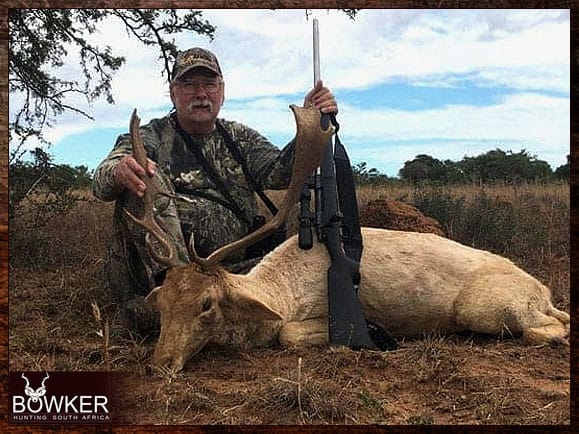
I have passed up many opportunities to hunt and fish over the years
I lost one of my oldest friends to prostate/bone cancer last year. It profoundly affected me and reminded me of my father’s recurrent warning to go hunting, fishing, and trapping while still young?
Ignoring my father’s good advice for most of my life, I have passed up many opportunities to hunt and fish over the years, pursuing various careers instead until I found myself no longer young.
So, I felt more than fortunate to hunt Africa and lucky that the hunting did not include much mountain climbing, fording of rivers, or deep jungle excursions. In fact, on the last day of our 10-day hunt, cloudy weather turned into a light steady rain. Since we were south of the equator in April, the weather was cool, dry, and calm.
My African Hunt – Cape Bushbuck
Brother Thomas lamented that the forecast did not bode well for our last day as he was still short one Cape Bushbuck, having given up an earlier chance, which I took for him :-). But the following day, after a good sleep and quick breakfast, we all loaded into the truck for a short trip around the farm.
It wasn’t long before we heard a tap on the roof and a soft voice telling Nick my Mountain Reedbuck was waiting for me right up the hill. Sure enough, with his laser vision, Nick spotted the small herd of Reedbuck just north of the road and high up on the hill. It took a minute more for him to find the buck lying down in the perfect cover of rock and veld.
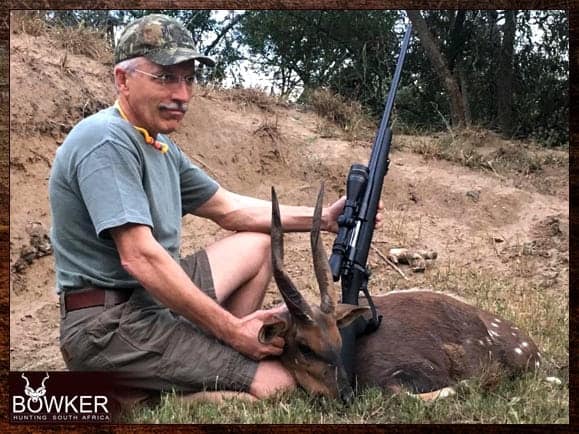
“Reedbuck,” Nick says while sliding out of the driver’s seat.
“Reedbuck,” Nick says while sliding out of the driver’s seat. Binoculars in hand, he whispers, “Nice one,” my cue to get armed and ready. In another second, the dreaded “sticks” were up. As I mounted the 280, Ackley asking out of the corner of my mouth, “how far,” Nick relayed, “190”.
In the two minutes it took us to set up, the lovely little, 50lb buck had gotten up from his “comfortable” bed and slowly walked up the hill, just cresting it for a perfect silhouette in the overcast drizzle, and then it happened.
Without my usual pause and seemingly endless “aiming,” I found the relatively small shoulder and squeezed that trigger like Adam finally touched God. I knew when the buck’s head reared up, and his hind legs slipped out from under him that the 160 grain Nosler Accubond hand worked as advertised. Nick could not hide his surprise, but he did smile. Back to the farm for a nice lunch, a requisite nap, and on to the afternoon hunt!
Perfect start to a great day! Stay tuned for the Final Chapter of our African hunt.
The final chapter
There had been very little rain; we couldn’t begrudge them the little moisture we were getting on our last hunting African hunt day. As the cold drizzle kept the dust and the animals down, I found some clouds, and rain made for a great little nap. After a perfect lunch, Nick asked if I would like to take a shot at the White Blesbok I commented on earlier in the week.
Having slept under the nice shoulder mount in my room for a week, I found him one of the ugliest animals I ever saw. “Bles” (Afrikaans for blaze) refers to the white patch typical of the standard animal or the white patch commonly found on a pony.
I did note that the Blesbok looks better in all-white
I think the only antelope hit by an uglier stick is the Hartebeest. But I did note that the Blesbok looks better in all-white, which seemed to entertain the typically stoic Professional Hunter.
Off we went then, up and down the gravel road almost to the rock fence denoting the entrance to the farm, and a hard left through fields covered with sheep, finally to a large bowl about a mile round filled with Springbok and Blesbok in several herds with singles interspersed.
We had driven past these herds several times on various hunts, and Nick’s brother Rob had culled a lame Springbok not far from our current stalk. But this was the first serious look at a Blesbok trophy.
Nick seemed relieved to find a lovely “white” Blesbok lying comfortably in his bed. Like us, these plains game animals like to lounge around when it is raining.
We jumped out the Land Cruiser at a half-mile or so. As had been my habit, I followed Nick lock-step about a yard behind, reading somewhere that two appear as one animal when so configured. He likely thought me gay at first but did note that I loaded my gun, before the stalk, instead of racking one in behind him, as he recalled one of his clients doing.
My African Hunt – White Blesbok
As we slowly but deliberated, walked straight at the Blesbok, Nick reading his mood, stopping every 100 yards or so to glass the beast. Ever closer, I wondered just how close we would get in this now gently rolling terrain in plain sight of our target. After 20 minutes or so, the buck reluctantly got up from his wet bed to take a closer look at this 4-legged man.
Nick turned to me and asked if I wanted to shoot from the sticks or the ground? Ha! I went for the ground without answering, wet or not. We had discussed the strategy the night before, and Nick agreed to lend me his suppressed Remington 700 in 7mm magnum for what would surely be a long shot.
I have asked if I would like the Swarovski reticle illuminated or straight. “Straight,” I said straight, thinking I wouldn’t know what to do with an illuminated crosshair.
As I nestled in behind the familiar furniture of his Remington 700 7mag–identical to 280AI, but for a bit more powder behind a 162grain Hornady SST, the suppressor and handy little bipod–the whole thing felt like home.
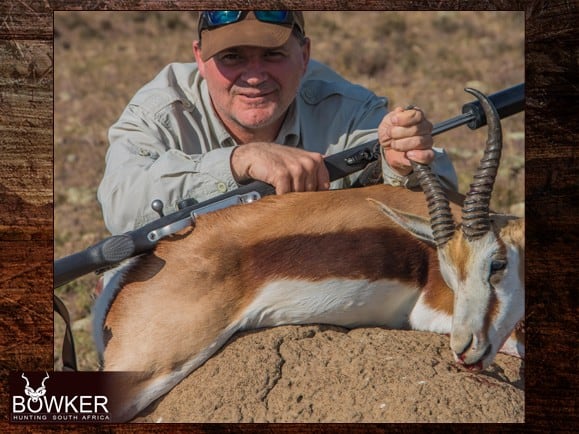
How far? “425 yards,”; says Nick.
Now prone with the standard rifle and spectacular glass, I was cold as the rain gently covering everything. Fortunately, I have used a bipod and had only to find my target, still curious about the now dismembered 4-legged farmer. As I settled in and pulled the rifle gently back into my shoulder, take the slack out of the bipod.
How far? “425 yards,”; says Nick.
Knowing the seven mag shoots a bit faster than my old 280, I held just at the top of the shoulder and let the gas out of that 7mag. A second and a half later, the Blesbok took the same attitude as the Reedbuck earlier that day. As he went down, Nick started trotting toward him. I didn’t need to ask as I already had a fresh round in the chamber and followed him toward the badly hurt but still moving animal.
As we approached at 150 yards or so, the buck noticed our approach-from a different angle–and tried to get up. Nick said, “Shoot him again.” Something about adrenaline seems to make my off-hand better than my rested shooting, and the second round was straight in the boiler room, lights out for a nice white Blesbok.
Naturally, I was elated, but Nick was excited–since he had his prayers answered–and made a gesture to give me a high-5, which I mostly missed, but just the same, I was happy for both of us.
My African Hunt – “All’s well that ends well.”
As W.S. once said, “All’s well that ends well.” And so did our African hunt adventure. Not the grand safari I read about in my youth, conducted by the intrepid, if murderous, hunters like Karamoja at the turn of the century. Still, most of the animals taken back then are always available and sustainable through the mutual interest of avid hunters and capable animal husbandry practiced by my new friends in the East Cape.
I want to thank my gracious host, his brother Rob and their crew. Not forgetting my brother John who recommended the guns, I took note of the similarity of my Mauser 358NM and Bell’s 257Rigby– and Dan, who gave much insight from his time working in the new Medupi power station northwest of Johannesburg, Johannesburg, to the locals. And, of course, brother Thomas started the whole thing by wistfully recounting the trip he and the lovely Donna first made in 2010 while I admired the beautiful mounts hanging on the walls of his study.
Finally, I would like to thank my fans, without which none of this would have been possible. OK, my fan. OK, Teresa, my one and only.
It was a great time, and yes, I would go back in a heartbeat, plus 24 hours of air time, figure two days travel, little sleep, and a severe backache for your South African hunt.
Thank you all for tuning in. I hope you all enjoyed this short epistle and will endeavor to bring you a new and exciting hunting adventure soon.
Until then, keep that fan mail coming!
